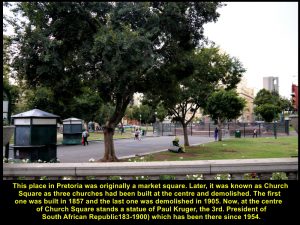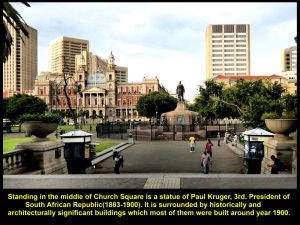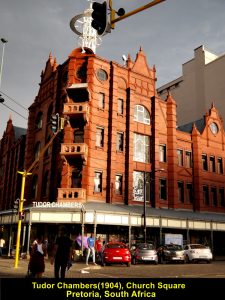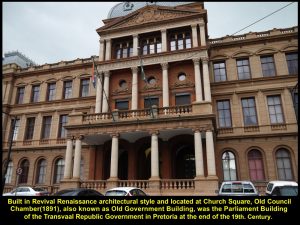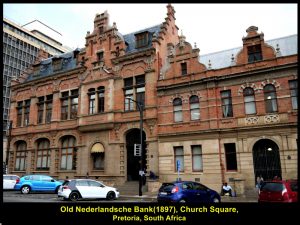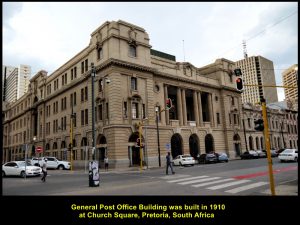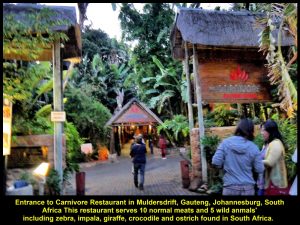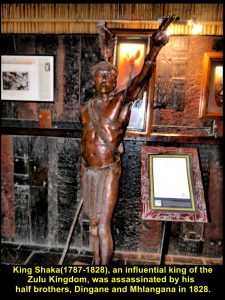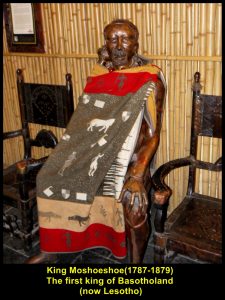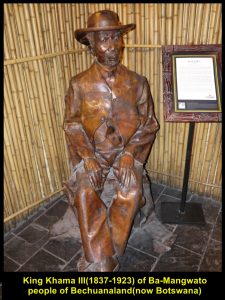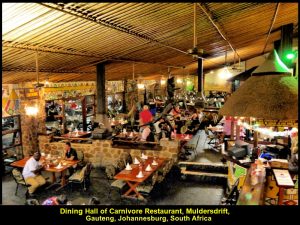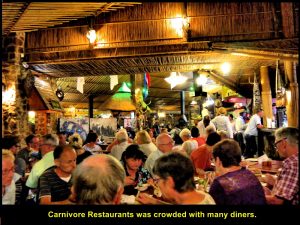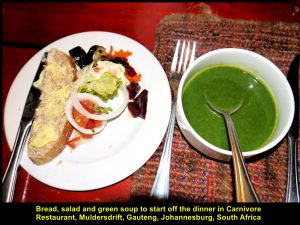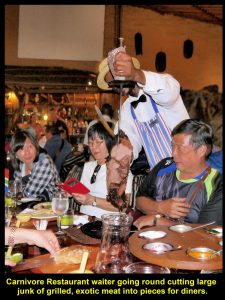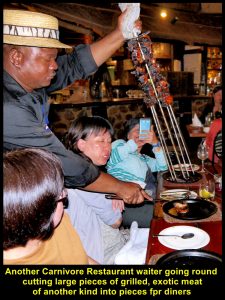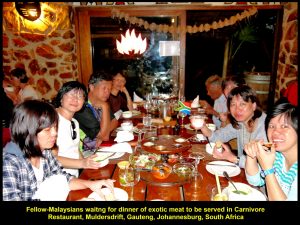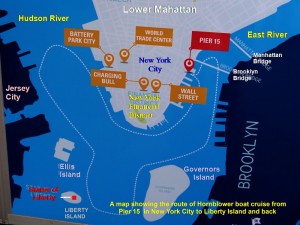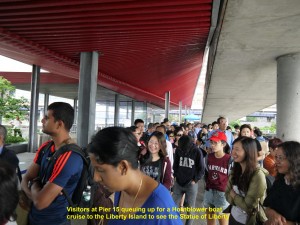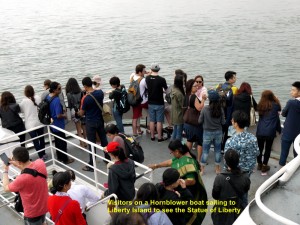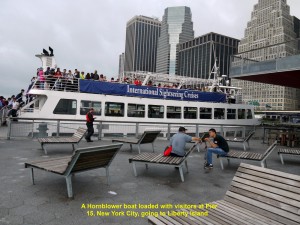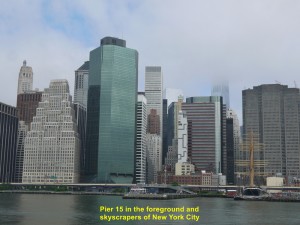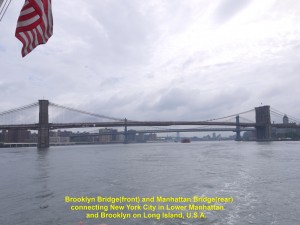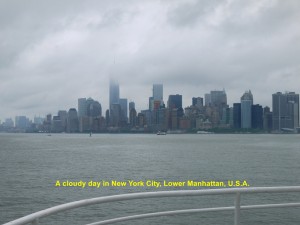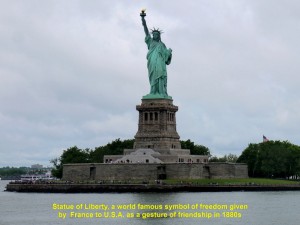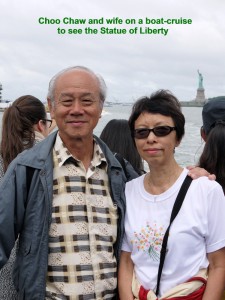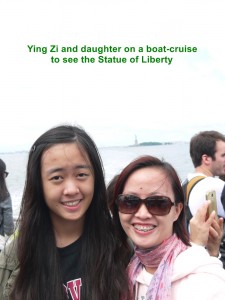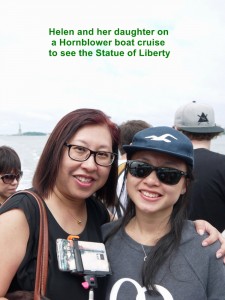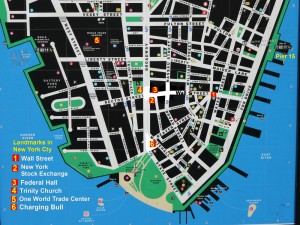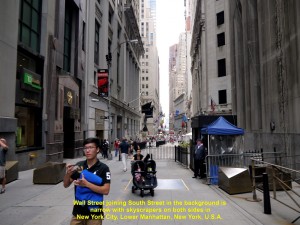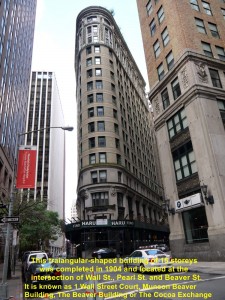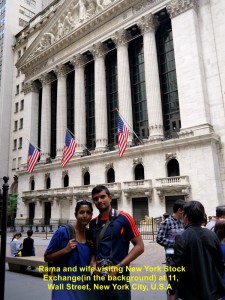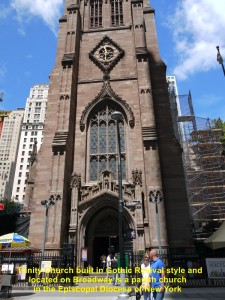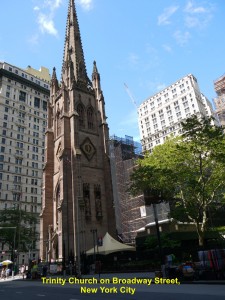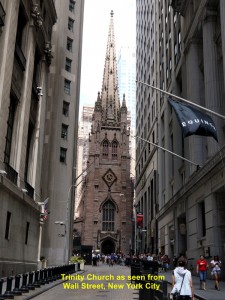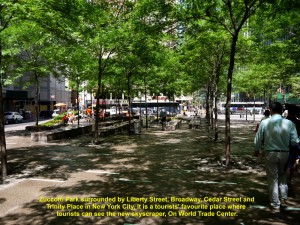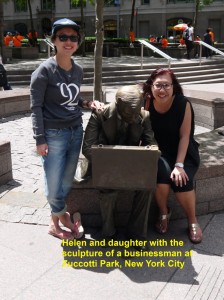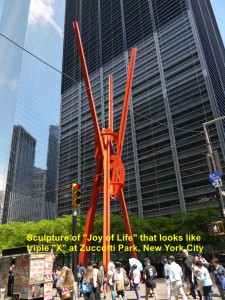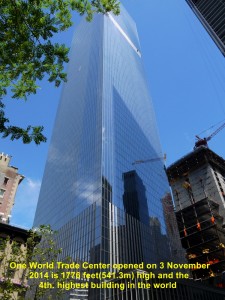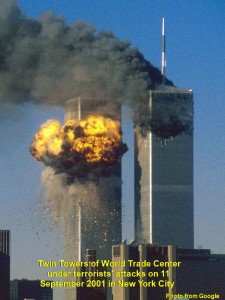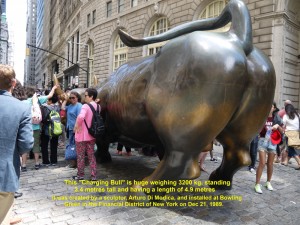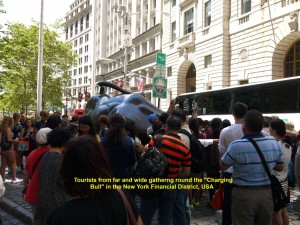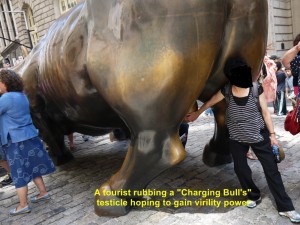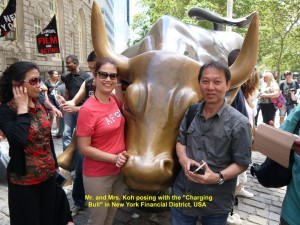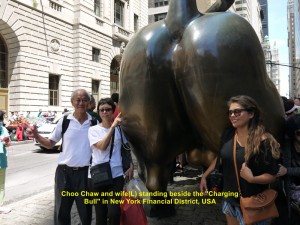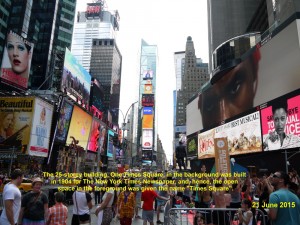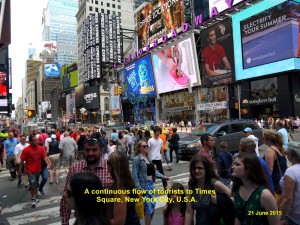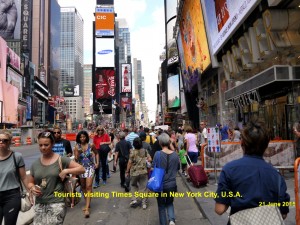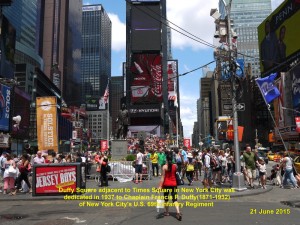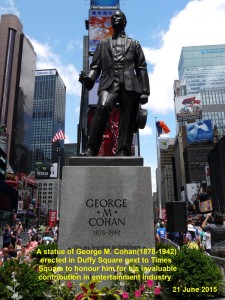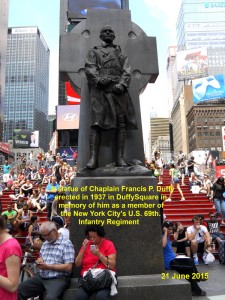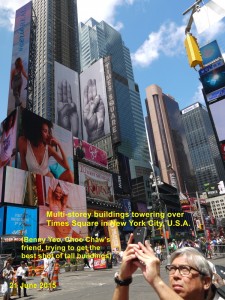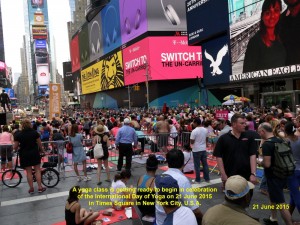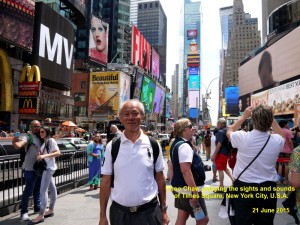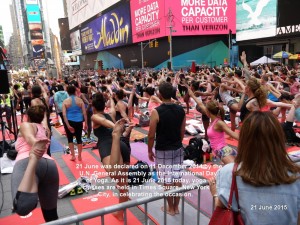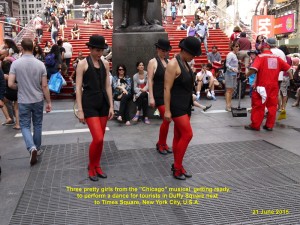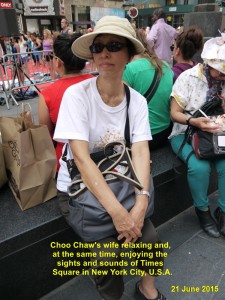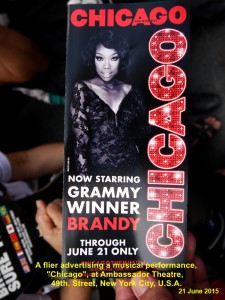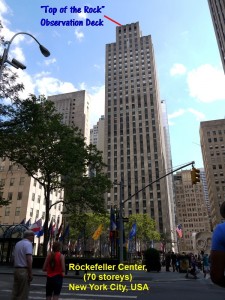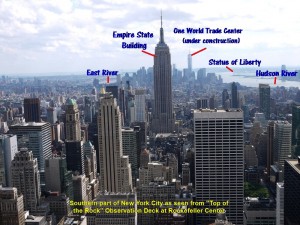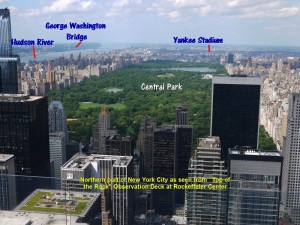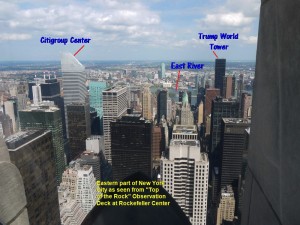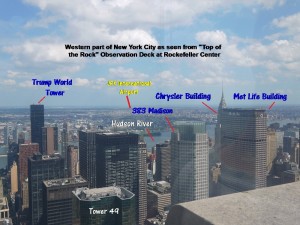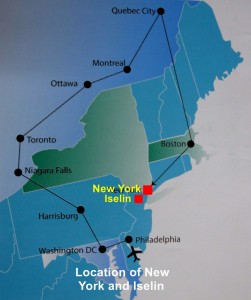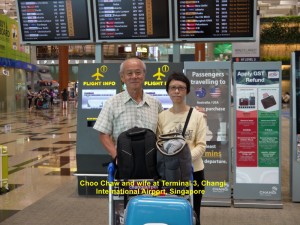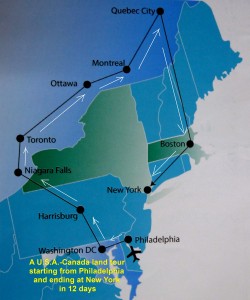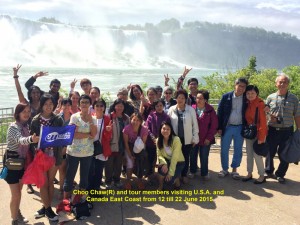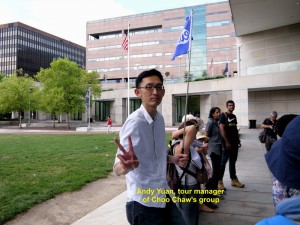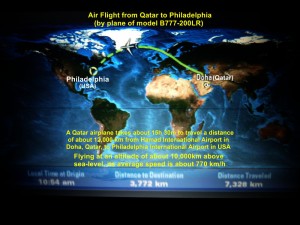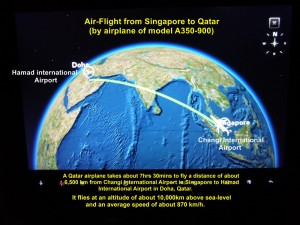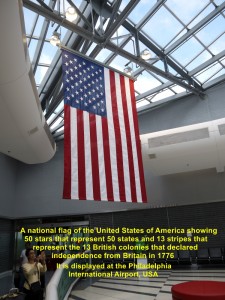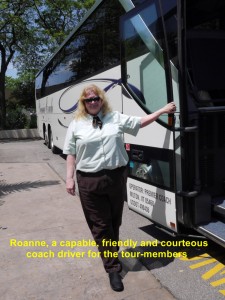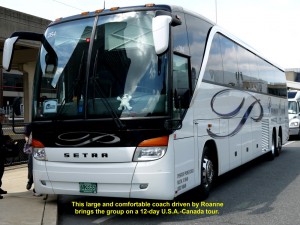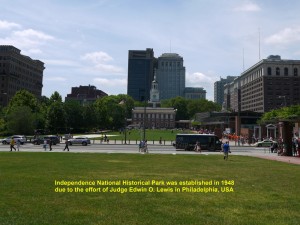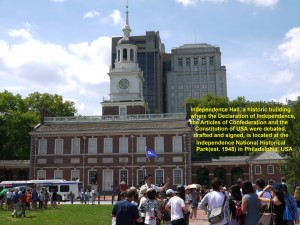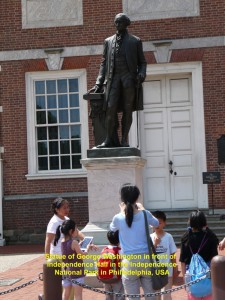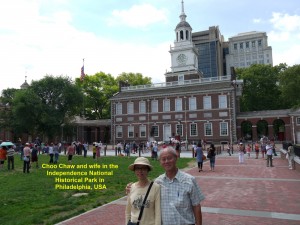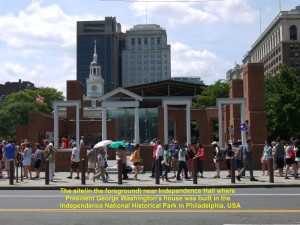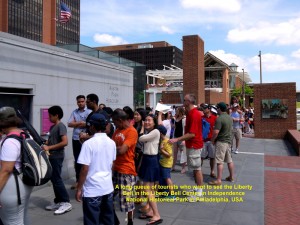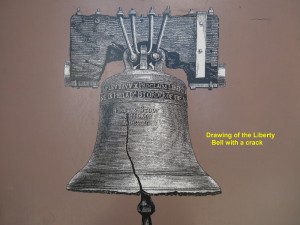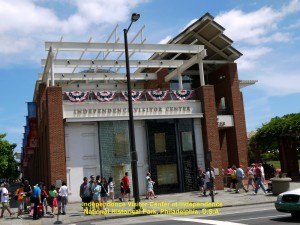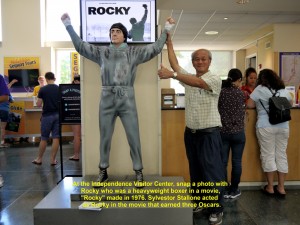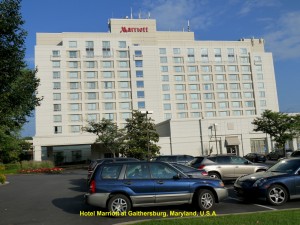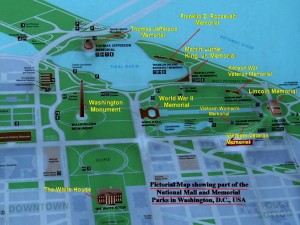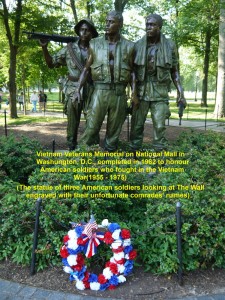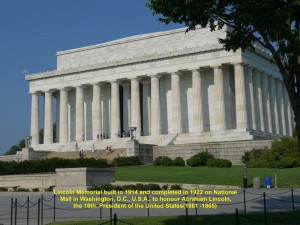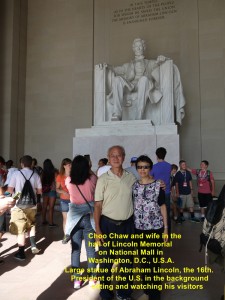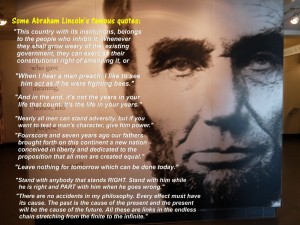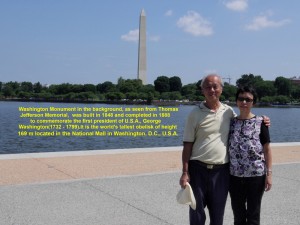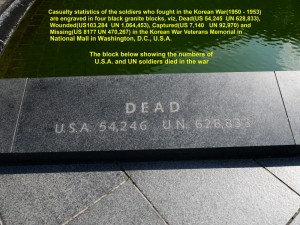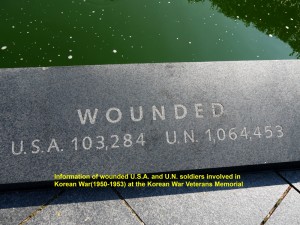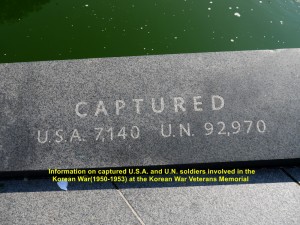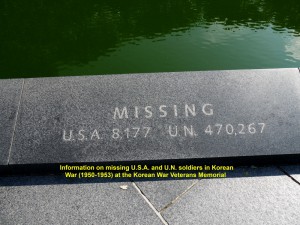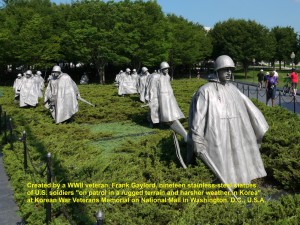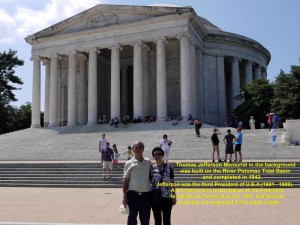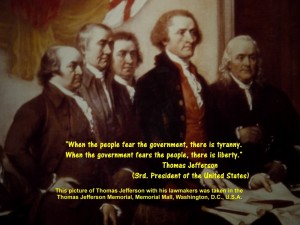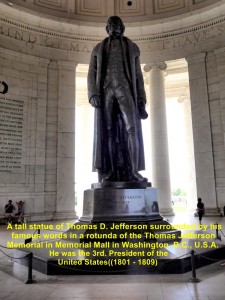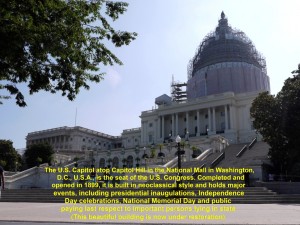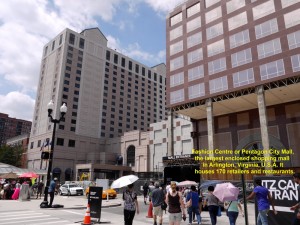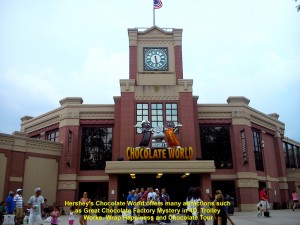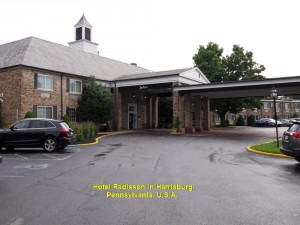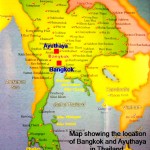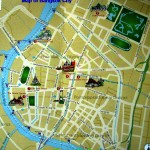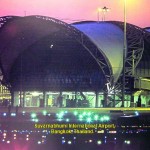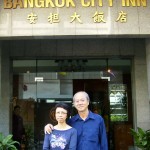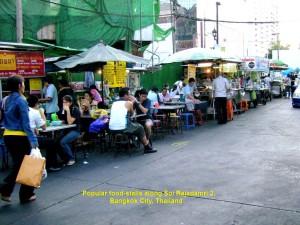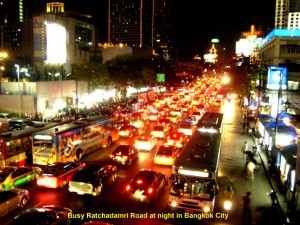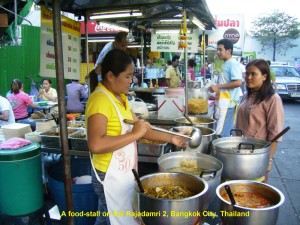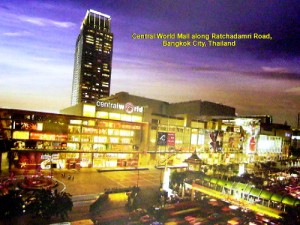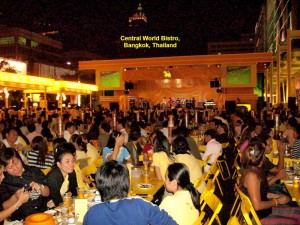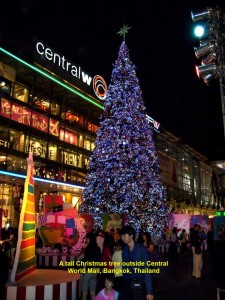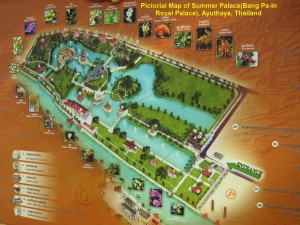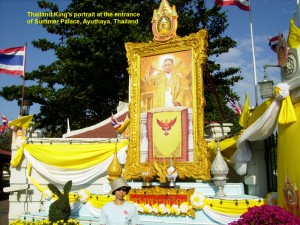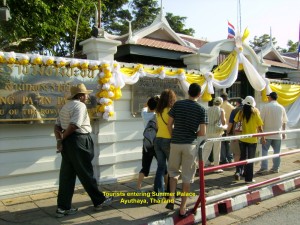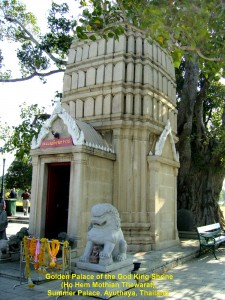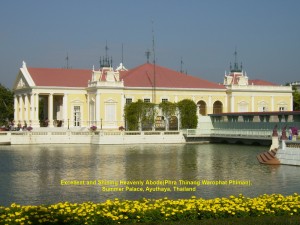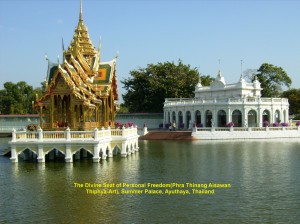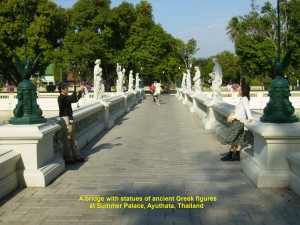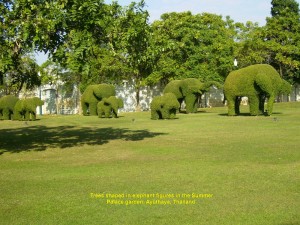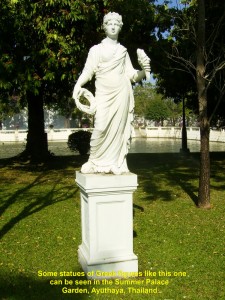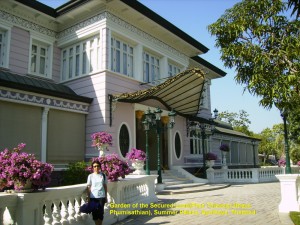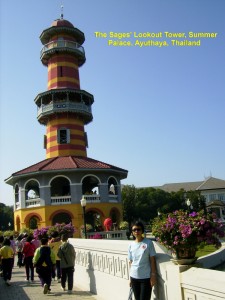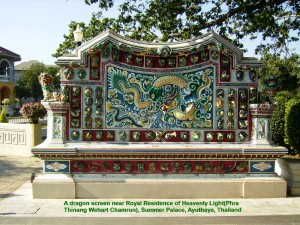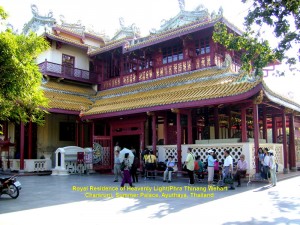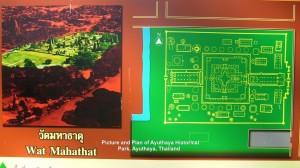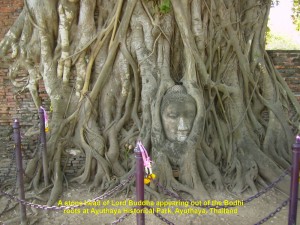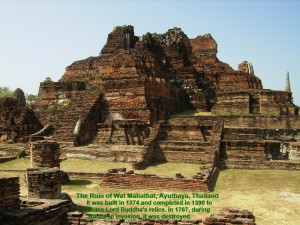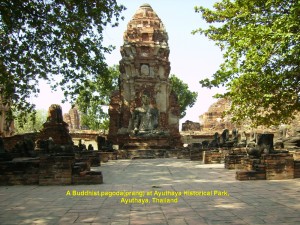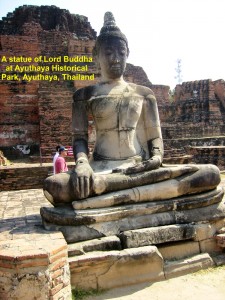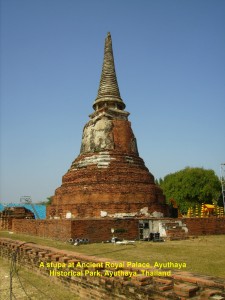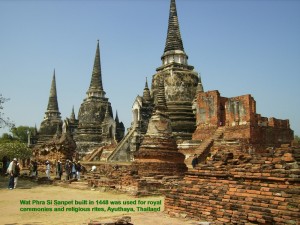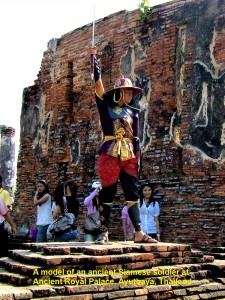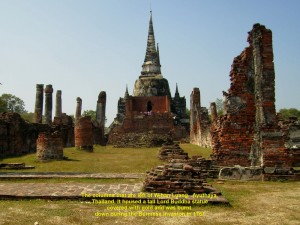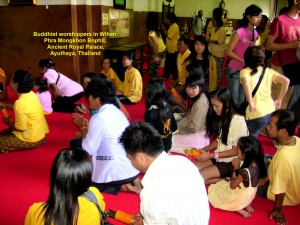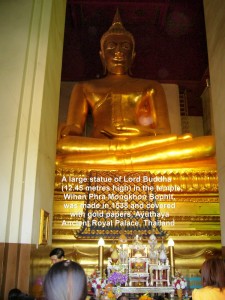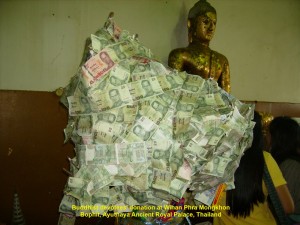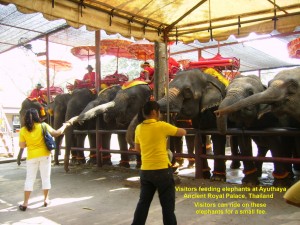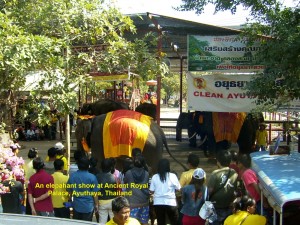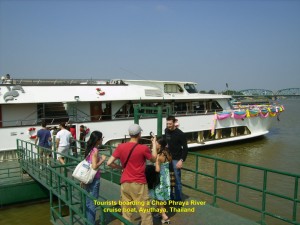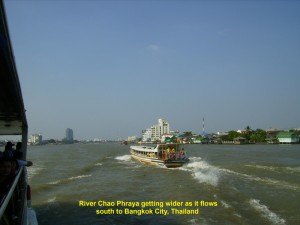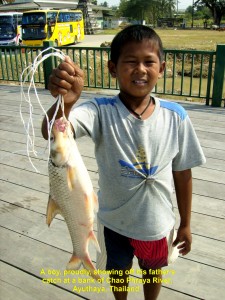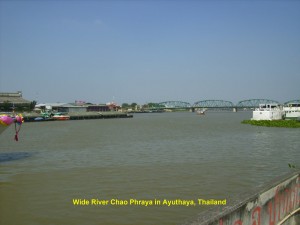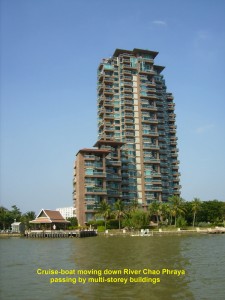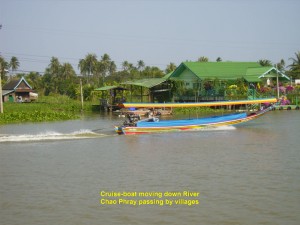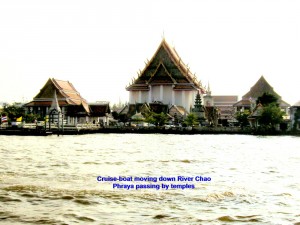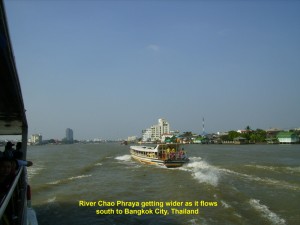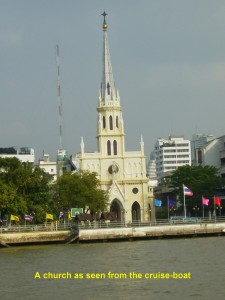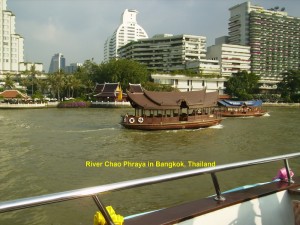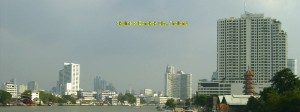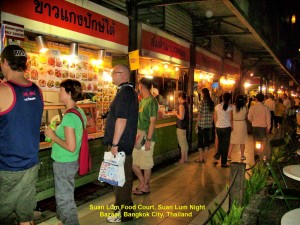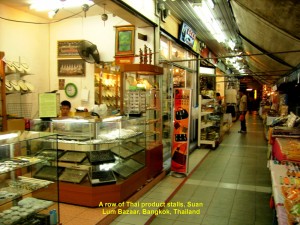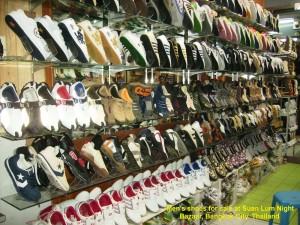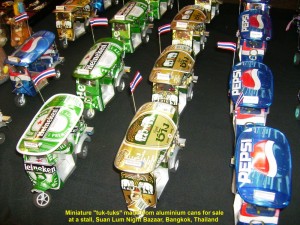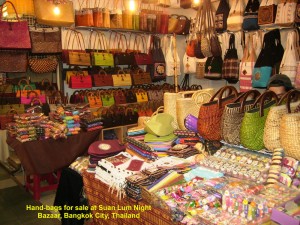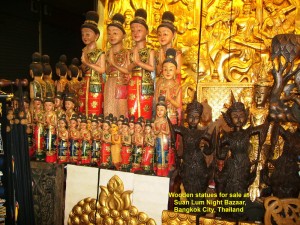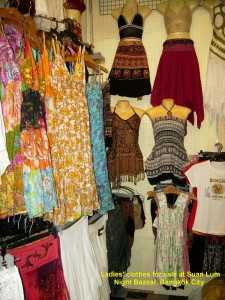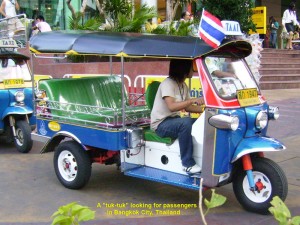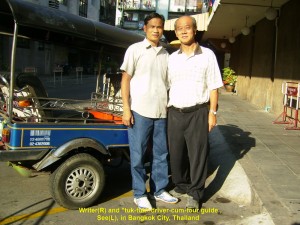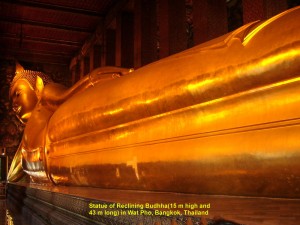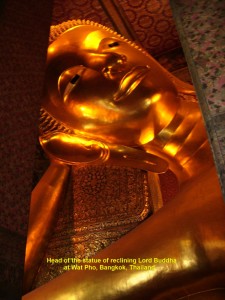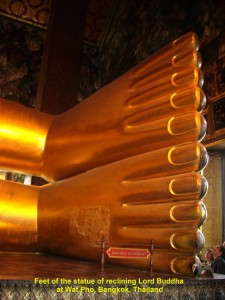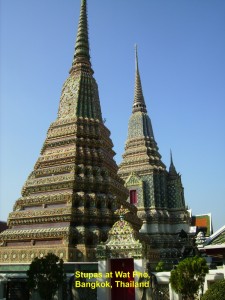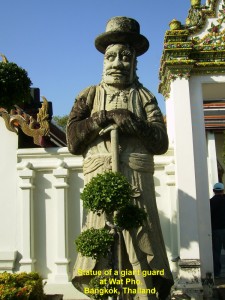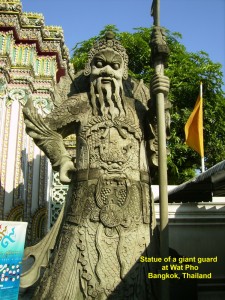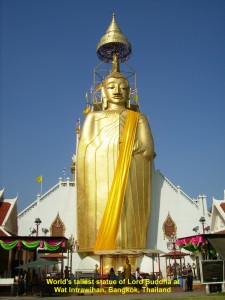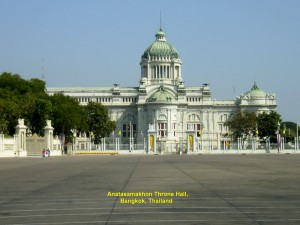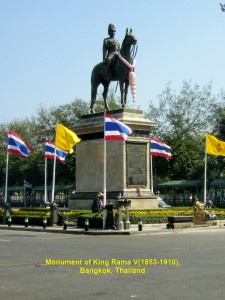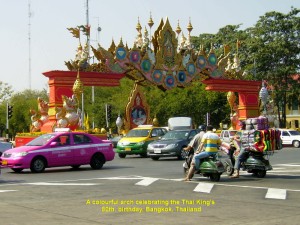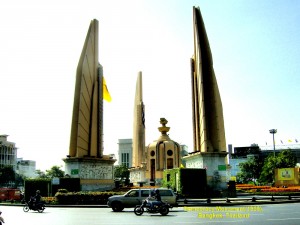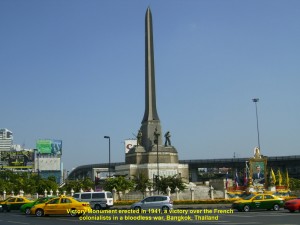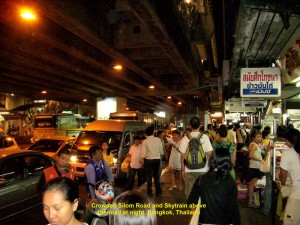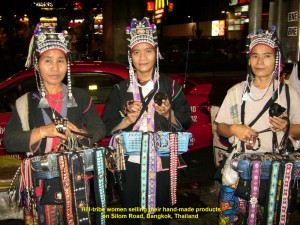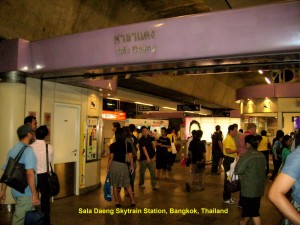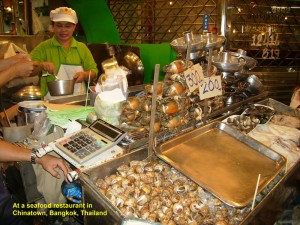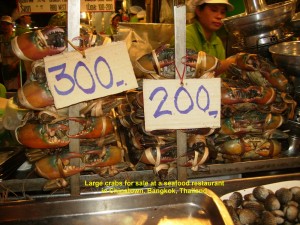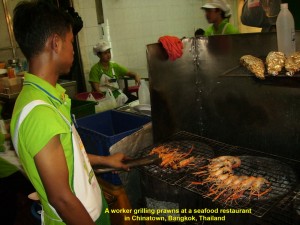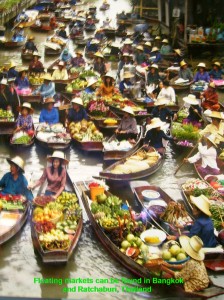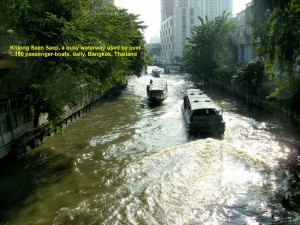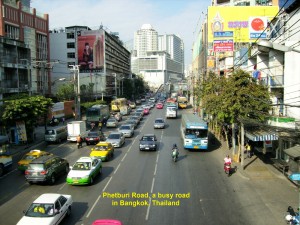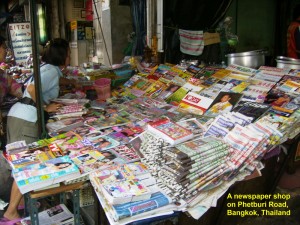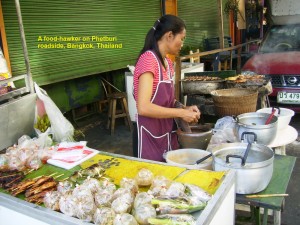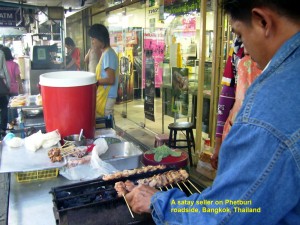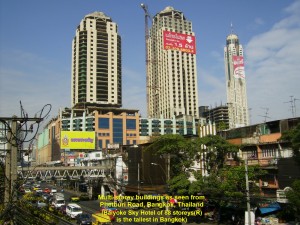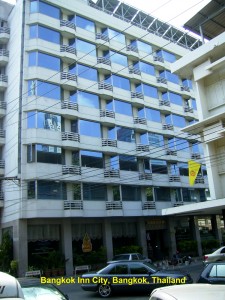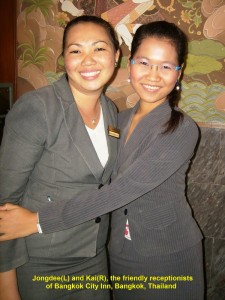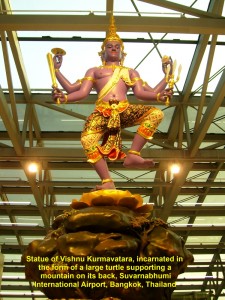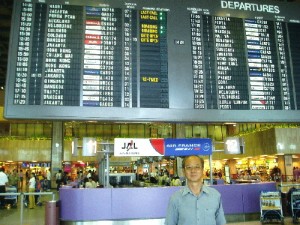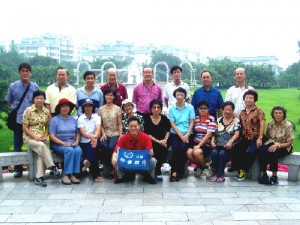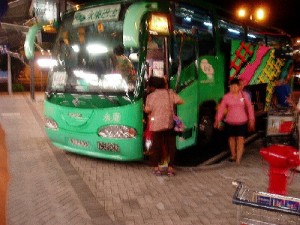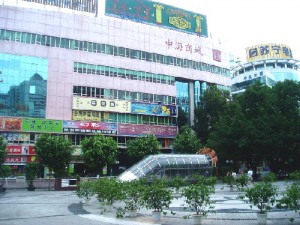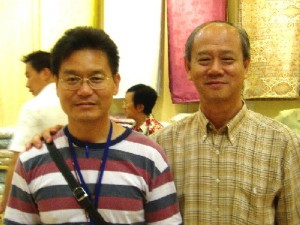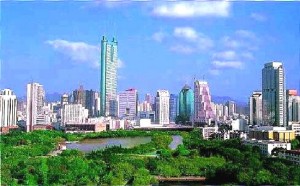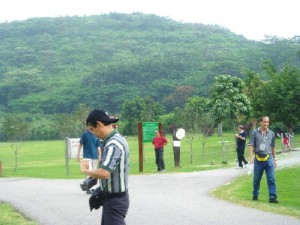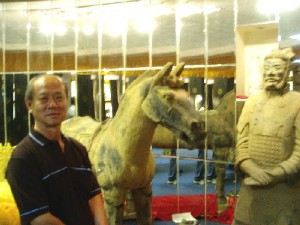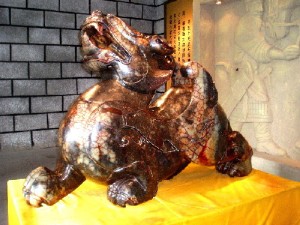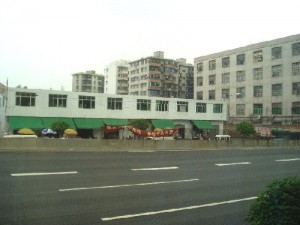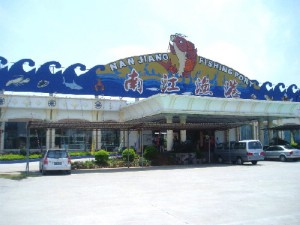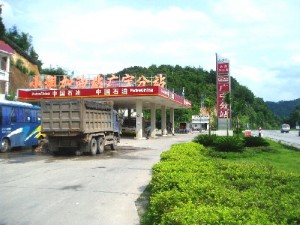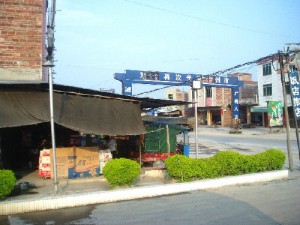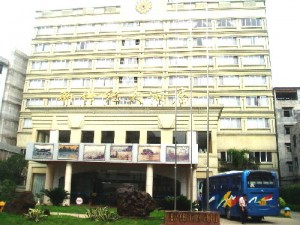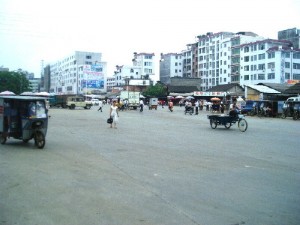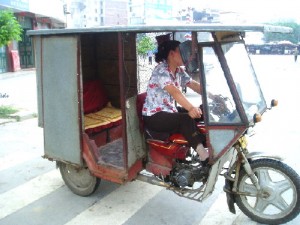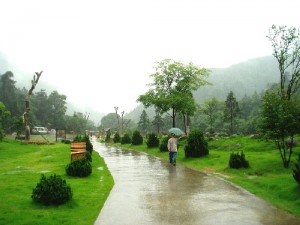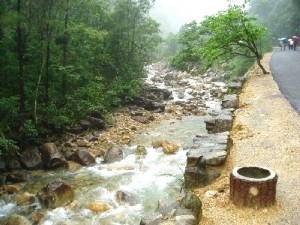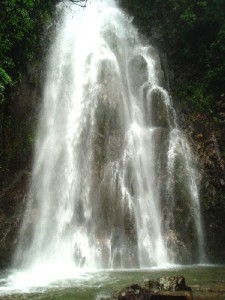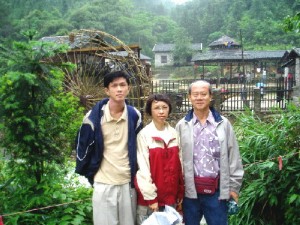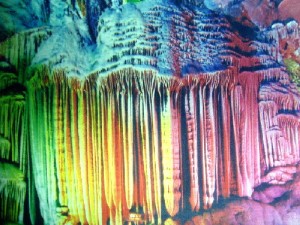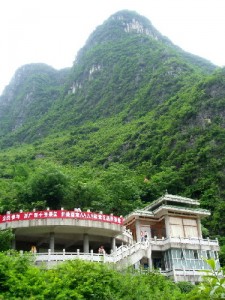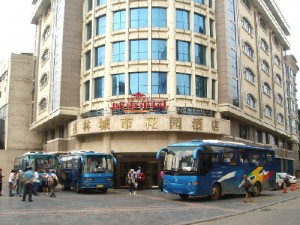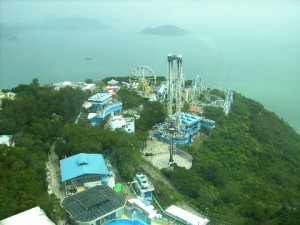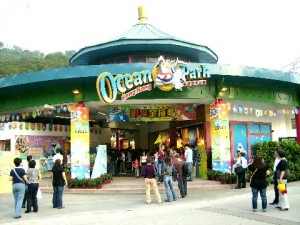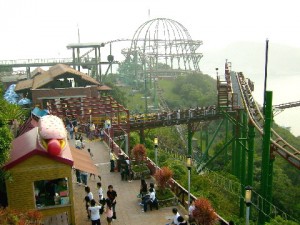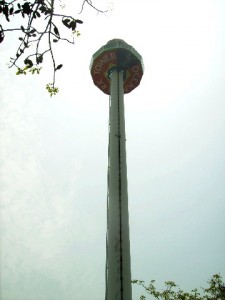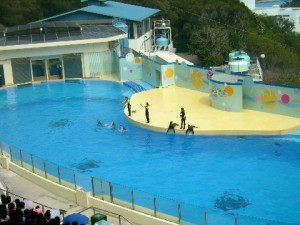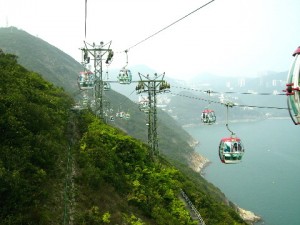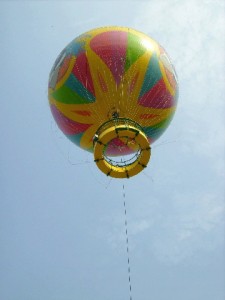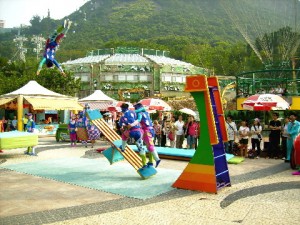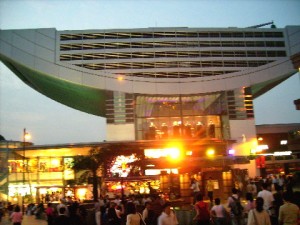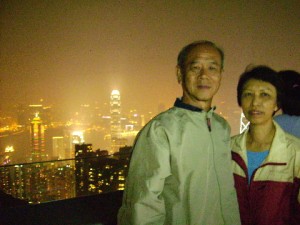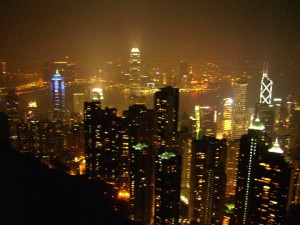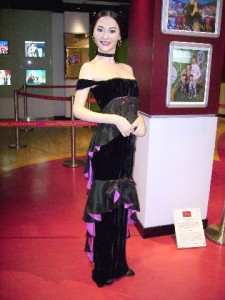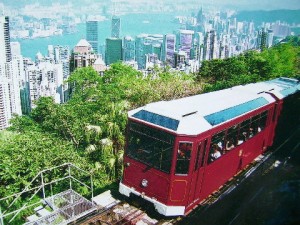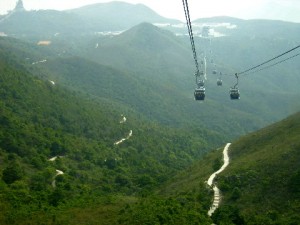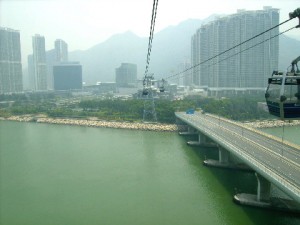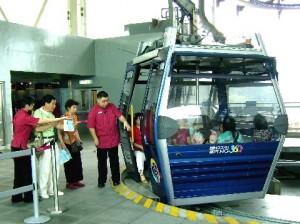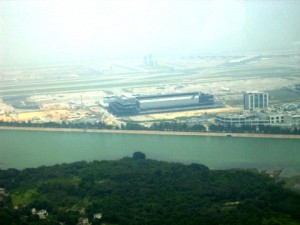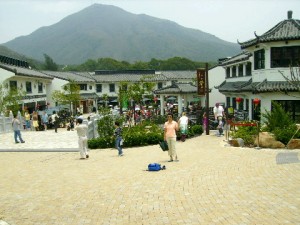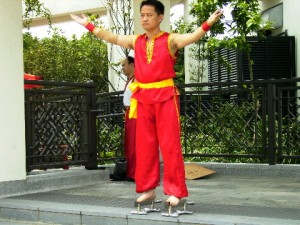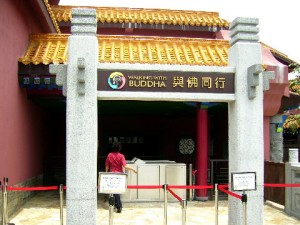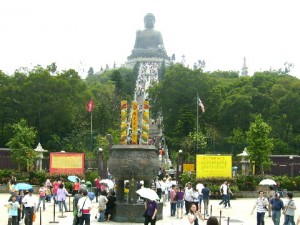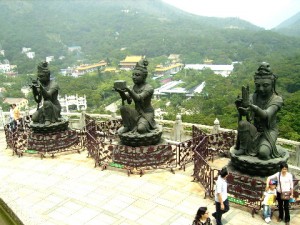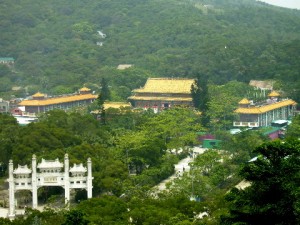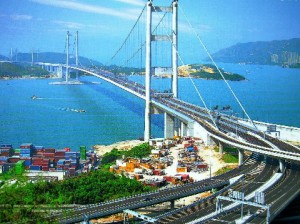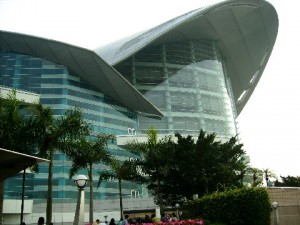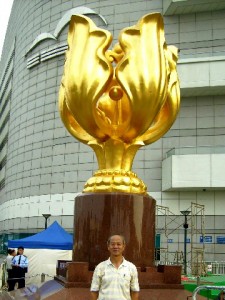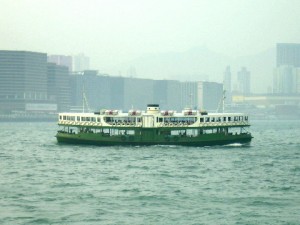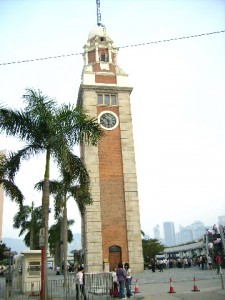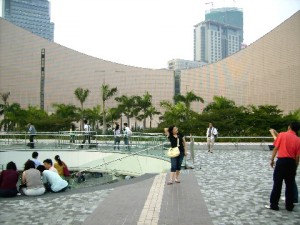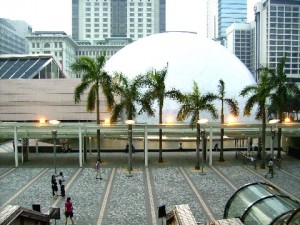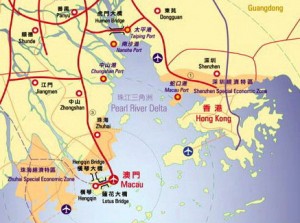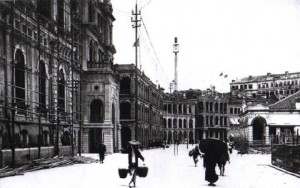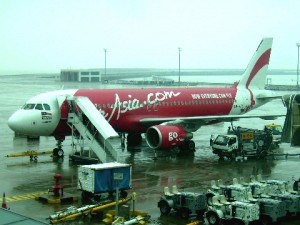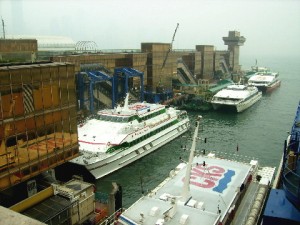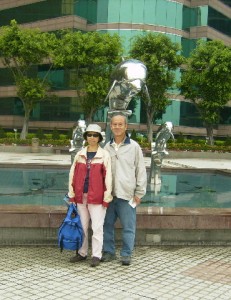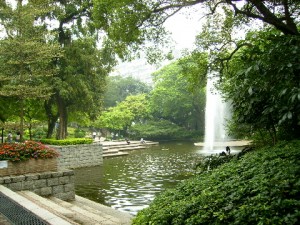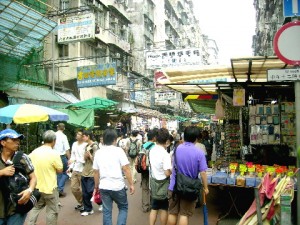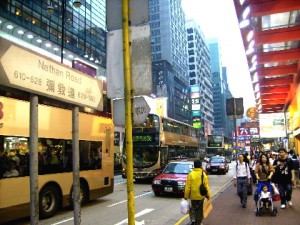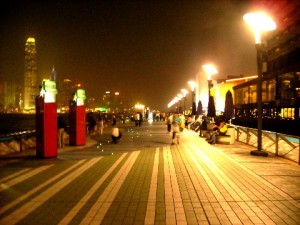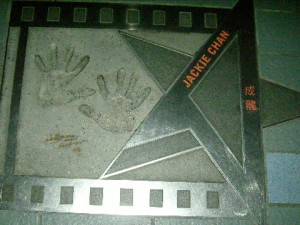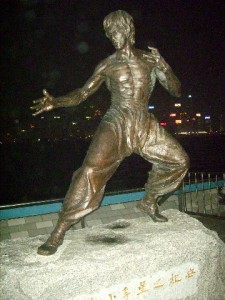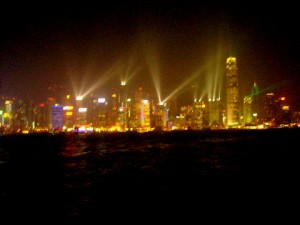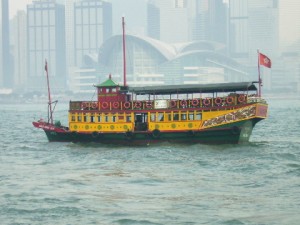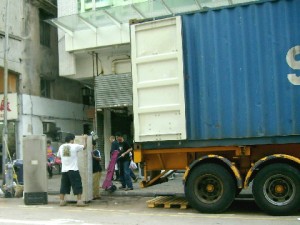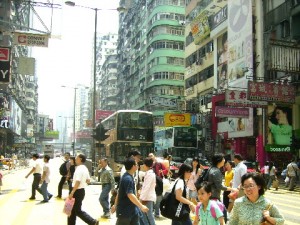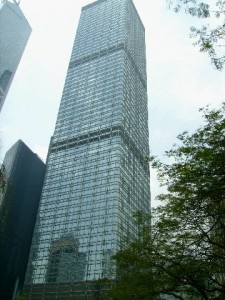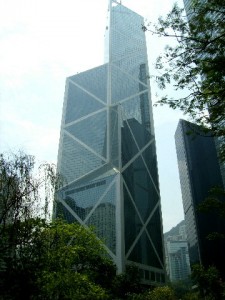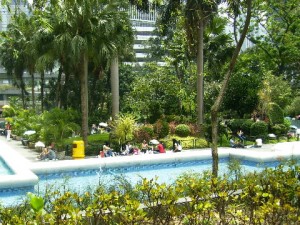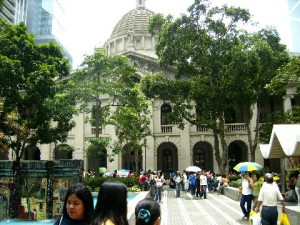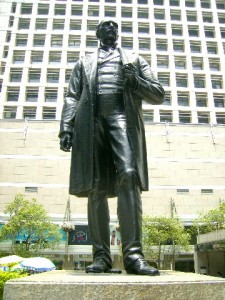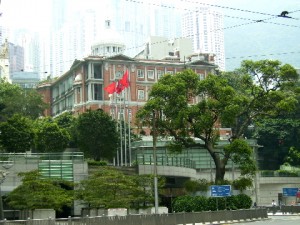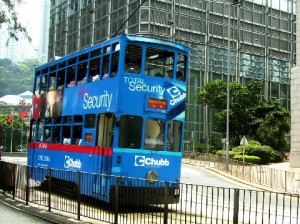South Africa Travel Part VII: Kruger Museum, Church Square, Melrose House, Carnivore Restaurant
South Africa Travel Part VII: Kruger Museum, Church Square, Melrose House, Carnivore Restaurant
(Continue from South Africa Part VI)
Day 6 Thursday, 1 Dec 2016
Kruger Museum
After a visit to Voortrekker Monument where we learned about the history of Voortrekker(Dutch-speaking pioneers), we went to the city of Pretoria and stopped in front of a house which was already closed in the evening. That single-storeyed, wooden, Victorian-styled house was built in 1884 as a private residence for Paul Kruger and his family. It was located along Nkomo Street.
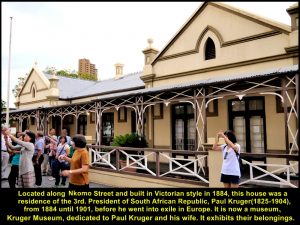
Kruger Museum, a former residence of Paul Kruger, the 3rd. President of South African Republic(1883-1900)
Paul Kruger
Paul Kruger(1825-1904) was a Boer leader and former President of South African Republic(Transvaal) from 1883 until 1900. During the Second Boer War(1899-1902) between the British Empire and Kruger’s men(Boers) in South Africa he went into exile in Europe where he died in Switzerland in 1904. The British won the war in 1902.
The house was restored in its original form and in 1934 it was opened to public as a museum, Kruger Museum. In the museum, visitors can see many things belonging to Paul Kruger and his wife.
Statues of White Lions
As it was already closed when we arrived at the museum, we spent several minutes looking at its front. There were two statues of white lions in front of the entrance that attracted our attention. They were birthday gifts given on 10 Oct 1896 by a mining magnate, Barney Barnato, to Paul Kruger who was the President of South African Republic(Transvaal) then.
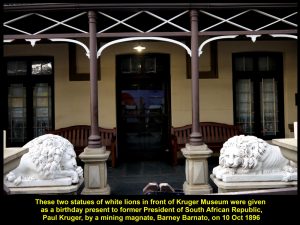
Two statues in front of Kruger Museum given as birthday gifts for Paul Kruger in 1896 by a mining magnate, Barney Barnato
Kruger Church
Looking across the road from the museum, I saw a church where Paul Kruger attended church services, frequently. It was officially opened by Paul Kruger in 1897. Originally, the church was known as The Dopper Church, and later Reformed Church Pretoria. But now it is known as Kruger Church.
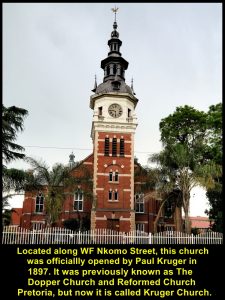
Kruger Church, a place opposite Kruger Museum where Paul Kruger attended church services, frequently
Church Square
Then we went to another place in the old town of Pretoria. It was a market place in the olden days. Later, a succession of three churches were built and demolished in the centre of the area. The first church was built in 1857 and the last one was demolished in 1905. As three churches had been built there, the people of Pretoria called it Church Square.
Statue of Paul Kruger
In the centre of the square stands a statue of a former President of South African Republic(1883-1900) on a high plinth, Paul Kruger(1825-1904). It was erected there in memory of Paul Kruger, a Boer leader who fought against the British Empire for the independence of Transvaal and former President of Transvaal or South African Republic(1883-1900).
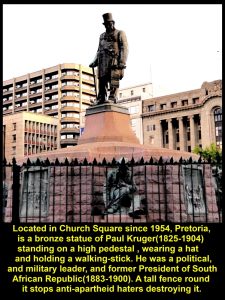
Statue of Paul Kruger holding a walking-stick and wearing a hat on a high plinth in the centre of Church Square
Old Buildings
There are many old but historically and architecturally significant buildings sited around the square. They were built around the year 1900, such as Palace of Justice(1902, Tudor Chambers(1904), Old Council Chamber(1891), Old Nederlandsche Bank(1897), and General Post Office(1910).
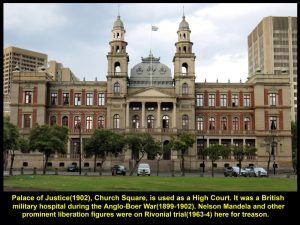
Palace of Justice, is a high court where Nelson Mandela was put on Rivonial trial for treason in 1963-4
Melrose House
After a short stay at Church Square, we went to Burgers Park in the centre of Pretoria City to see an elegant mansion built in 1886.
Known as Melrose House, it was owned by a wealthy businessman, George Jesse Heys. He and his family stayed there until it was taken over by the British forces that used it as military headquarters in 1900 during the Second Boer War(1899-1902). The war was fought between the Boers and the British soldiers. Boers were descendants of the Dutch-speaking settlers in South Africa. The war ended when the Treaty of Veereniging was signed on 31 May 1902 in the mansion which later became well-known.
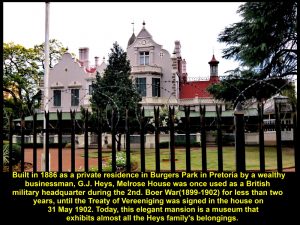
Melrose House was built in 1886 as a private residence for Heys and is now a museum that exhibits the belongings of the Heys’ family and a room where the Treaty of Vereeniging was signed in 1902.
Melrose Museum
This beautiful house is now a museum that has many exhibits belonging to the Heys family, such as paintings by British artists, exquisite carpets, ornate ceilings and fireplaces, original furniture, stained glass-windows, and many more.. Besides, the museum has a room and table on which the Treaty of Vereeniging was signed in 1902. Annual antique markets are held on its premises.
When we arrived at the museum in the evening it was closed to public. So, all we could do was to look at it from outside its fence for a few minutes before we went off for dinner.
Carnivore Restaurant
For dinner, we travelled to a restaurant known as Carnivore Restaurant in Muldersdrift, Gauteng, Johannesburg, which was 50 km south-west of Church Square in Pretoria. It served exotic meat, i.e. meat of game or wild animals, such as zebra, crocodile, impala, and kudu.
The restaurant had a large dining hall. While walking along a passage-way to the hall, we saw on both sides some wooden, life-sized statues of South African tribal chiefs and a politician, such as the following:
a. King Shaka(1787-1828) was an influential king of the Zulu Kingd0m. He was assassinated by his half-brothers, Dingane and Mhlangana, in 1828.
b. King Mzilikazi(1790-1868) was the king of Matabele Kingdom which he founded. He was considered as one of the greatest African military leaders.
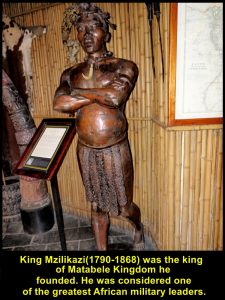
King Mzilikazi(1790-1868) was king of Matabele Kingdom he founded. He was considered as,one of the greatest African military leaders.
c. King Kgosi Mogale Mogale(1795-1869) was the king of Ba Po Ba Mogale Kingdom. His people remembered him for his bravery, diplomacy and leadership.
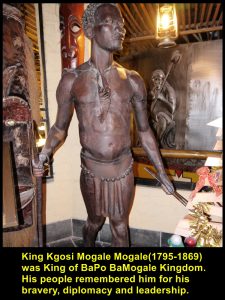
King Kgosi Mogale Mogale(1795-1869) was king of Ba Po Ba Mogale Kingdom. His people remembered him for his bravery, diplomacy and leadership.
d. King Moshoeshoe(1787-1879) was the first king of Basotholand(now Lesotho).
e. King Khama III(1837-1923) was the king of Ba Mangwato people of Bechuanaland(now Botswana).
f. Mokope Modjadji(1936-2001) was the 5th. Rain Queen of the Balobeda tribe in Limpopo Province of South Africa from 1981 until 2001. Rain Queen was believed by her people to have special powers, like the ability to control clouds and rainfall.
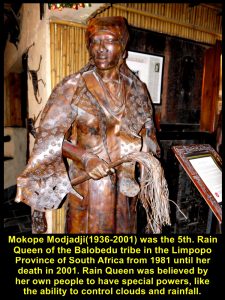
Mokope Modjadji(1936-2001) was the 5th. Rain Queen of the Balobedu tribe on the Limpopo Province of South Africa from 1981 until 2001. Rain Queen was believed by her people to have special powers, like the ability to control clouds and rainfall.
g. Nelson Mandela(1918-2013) was an anti-apartheid activist, political prisoner for 27 years, politician, philanthropist and the first elected President of South Africa(1994-1999).
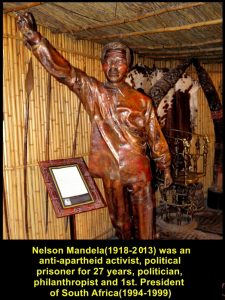
Nelson Mandela(1918-2013) was an anti-apartheid activist, political prisoner for 27 years, politician, philanthropist and first elected President of South Africa(1994-1999)
Dining Hall
In the dining hall of Carnivore Restaurant, we sat at the tables reserved for us. The hall was crowded with many diners from far and wide.
First Serving
A bowl of green-coloured soup and plate of bread and salad were first served to us. Then one waiter after another with different grilled exotic meat on long, large skewers came to our tables and cut a large piece of the meat for each of us.
Exotic Meat for Dinner
The kinds of meat we were given for the dinner were zebra, impala, kudu, venison(deer) and crocodile. Domestic animals’ meat was served, too, namely chicken, lamb and beef. Most of us did not enjoy eating the exotic meat as some were tasteless, rubbery and tough.
The meat I liked was the crocodile meat which was soft and tender, and venison sausage and balls, too. Anyway, we, Malaysians, enjoyed the fellowship atmosphere while having dinner together at the restaurant.
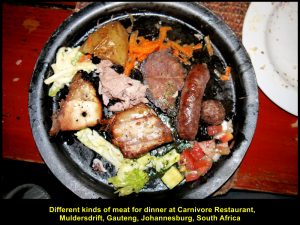
A hot-plate of exotic meat of zebra, impala and kudu, and domestic animals’ meat of chicken and lamb, together with some vegetables
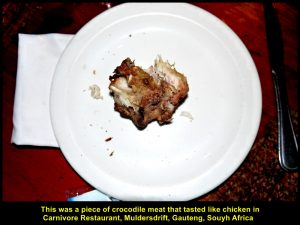
A piece of crocodile tasted better than other exotic meat as it was tender and soft, and tasted like chicken-meat.
Large Open-Air Stove
During dinner, I walked to a large open-air, circular stove in the centre of the dining hall. Large junks of meat of zebra, impala, kudu and crocodile on large skewers were roasted over the hot stove. Besides, domestic meat of chicken, beef and lamb were grilled over it.
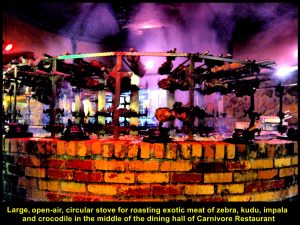
Large junks of exotic meat were roasted over a large open-air, circular stove at Carnivore Restaurant
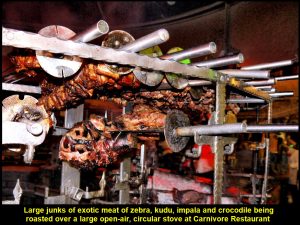
Large junks of exotic meat were roasted over a large open-air, circular stove at Carnivore Restaurant
A Picture of Game-Animals
There was a picture of four game-animals, zebra, kudu, impala and crocodile, near the stove, implying that the meat of those game-animals was for the dinner.
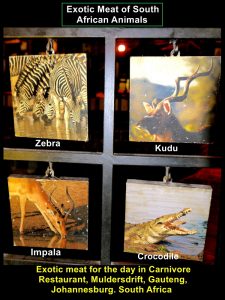
Meat of four game-animals, viz. zebra, kudu, impala and crocodile, was for the dinner at Carnivore Restaurant
Happy Mood Before Dinner
As our fellow-Malaysians were in happy mood before the dinner started at Carnivore Restaurant, I went round taking photos of them. See them in the photos below.
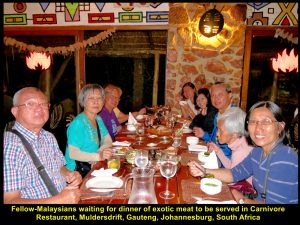
Fellow-Malaysians at another table were in happy mood before dinner of exotic meat at Carnivore Restaurant.
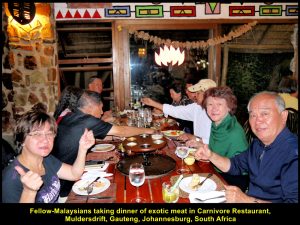
Fellow-Malaysians at the last table were in happy mood before the dinner of exotic meat at Carnivore Restaurant
Peermont Mondior Hotel
After dinner at Carnivore Restaurant, we left for a hotel, Peermont Mondior Hotel, which was 50 km south-east of the restaurant, but near Johannesburg International Airport or O.R. Tambo International Airport. We stayed there for a night and would leave for a gold mine museum in the morning.
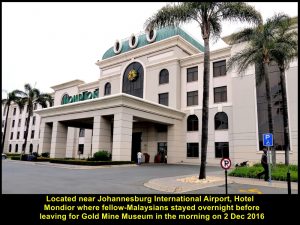
Hotel Peermont Mondior where Malaysians stayed overnight near Johannesburg International Airport
(continue in South Africa Travel Final Part)
Written by Choo Chaw
South Africa Travel Part I: Air Flight from KLIA to Cape Town, Cape Town Shantytowns
South Africa Travel Part II: Table Mountain, Malay Quarter, Castle of Good Hope. A & V Waterfront
South Africa Travel Part III: Hermanus, Cheetah Outreach, Stellenbosch, Jewel Africa
South Africa Travel Part V: Pilanesberg National Park(Game Drives/Safaris)
South Africa Travel Part VI: Sun City Resort, Union Buildings, Vootrekker Monument
South Africa Travel Part VII Kruger Museum, Church Square, Melrose House, Carnivore Restaurant
South Africa Travel Final Part Gold Reef City, Gold Mine Museum
U.S.A. and Canada East Coast Travel Part VI(New York)
Filed under: U.S.A. and Canada East Coast Travel Part VI(New York), Uncategorized
U.S.A. and Canada East Coast Travel Part VI(New York)
Day 10 Sunday, 21 June 2015
At 8.30 in the morning we left our hotel, Reanaissance Woodbridge Hotel at Iselin in New Jersey and went 31 km north-east to Pier 15 on New York Harbour in Lower Manhattan to see the Statue of Liberty on a tiny island called Liberty Island.
Hornblower Boat Cruise
When we arrived at Pier 15, the sky was cloudy and we were worried that it might rain. After queuing up for half an hour together with other tourists, we boarded a Hornblower boat. When it was going to the Liberty Island we were glad that the sky became bright and the Statue of Liberty could be seen in the distance, clearly.
Bridges and Skyscrapers of New York City
As the boat was moving, slowly, towards the statue, we saw bridges, Brooklyn Bridge and Manhattan Bridge, connecting New York City and Brooklyn on Long Island, and skyscrapers of New York City moving away from us.
Then, half an hour later, the boat stopped for awhile near the Statue of Liberty, and we and others on the boat were excited and began to snap photos of the huge apple-green statue.
Statue of Liberty on Liberty Island
Created in the image of a Roman goddess, Libertas, in 1886, the Statue of Liberty on Liberty Island was a gift to the U.S.A. from France as a gesture of friendship. Standing at a height of 34 metres on a 27 metre-pedestal, the goddess holds a torch high in her right hand and a tablet in her left hand with the inscribed date of the American Declaration of Independence: “July 4, 1776”. Besides, there is a broken chain lying at her feet symbolising freedom from bondage.
In 1984, the icon of freedom was designated as a UNESCO heritage site. In the UNESCO’s “Statement of Significance”, it declares that the statue is a symbol of “liberty, peace, human rights, abolition of slavery, democracy and opportunity”.
Ellis Island
Near the statue is another island known as Ellis Island. It was the first stop and gateway for 12 million migrants who were mostly Europeans to places all over the United States from 1892 until 1954. Since 1990 the main building on the island is made a museum of immigration.
Soon we went back to Pier 15. After disembarking the board at the pier, we walked to South Street, crossed the road, and walked to Wall Street.
Wall Street, New York City
Wall street stretches from South Street to Broadway, a length of 1.1 km. It is narrow with multi-storey buildings on both its sides. Located in the New York Financial District, Wall Street has become a metonym for financial and corporate sector. It attracts lots of tourists from all over the world.
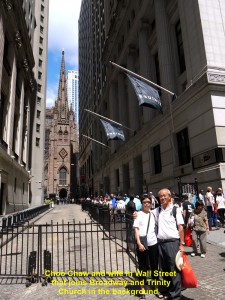
Choo Chaw and wife on Wall Street that joins Broadway in the background in New York Financial District
1 Wall Street Court
As I was walking along the street an unusual building of 15 storeys high and in a triangular shape caught my eyes. Located at the intersection of Wall Street, Pearl Street and Beaver Street, it was completed in 1904 and first occupied by Munson Steamship Co. and later by many other companies. Known as 1 Wall Street Court, it now becomes a residential building since 2006.
New York Stock Exchange
Soon we came to the world’s largest stock exchange by market capitalisation that is located at 11, Wall Street. Known as New York Stock Exchange(NYSE) and built in 1903, it provides a means for buyers and sellers to trade shares of stock in companies registered for public trading. It has an index, NYSE Composite Index, to measure the overall market performance over time. It has other indices too, like Dow Jones Industrial Average(DJIA), Nasdaq Composite and S & P 500.
American Stock Exchange Building
There is another building nearby. It is at 86, Trinity Place which was built in 1921. It was used as a stock market for equities trading by the New York Curb Exchange which was renamed the American Stock Exchange in 1953. The building then known as American Stock Exchange was closed on 1 December 2008 and all its equities trading activities were moved to New York Stock Exchange at 11, Wall Street.
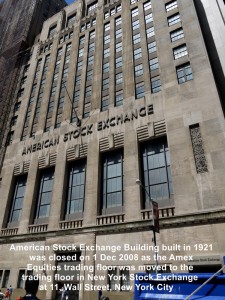
American Stock Exchange closed in 2008 after over 89 years of equities trading in New York Financial District, New York, U.S.A.
Federal Hall National Memorial
There is an old building known as Federal Hall National Memorial across Wall Street from the NYSE Building. It was built in 1842 to replace the old one which was built in 1700 as New York’s City Hall that was later demolished in 1812.
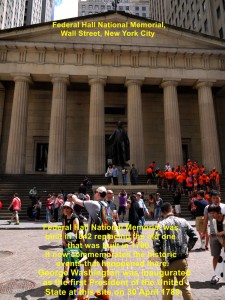
Federal Hall National Memorial built in 1842 to replace the one as New York’s City Hall, New York City
When the new Federal Hall was built in 1842 it first served as the U.S. Custom House, later Sub-Treasury Building and now a national memorial that commemorates the historic events that had happened there. Among the events are: the former hall at the same site was made the first Capitol Building of the U.S., and used as the place where George Washington was inaugurated as the first President of the U.S. on 30 April 1789 and the U.S. Bill of Rights was introduced in the First Congress.
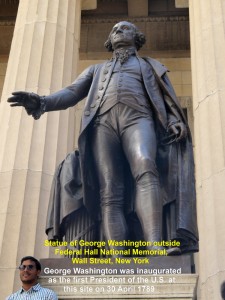
Statue of George Washington outside Federal Hall National Memorial in New York Financial District, New York
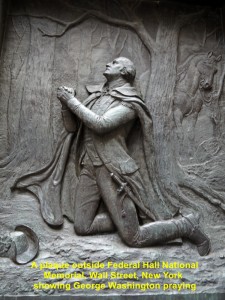
A plaque of George Washington on his knees and praying outside Federal Hall National Memorial, New York City
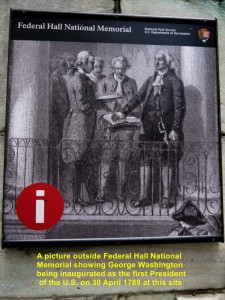
A picture showing George Washington being inaugurated as the first President of U.S.A. on 30 April 1789 outside Federal Hall National Memorial, New York City
Trinity Church
Trinity Church can be seen from Wall Street. It is at the end of Wall Street and on Broadway. Built in Gothic Revival architectural style in 1839-1846, it is a parish church in the Episcopal Diocese of New York. This is the third church being built at the same spot to replace two old ones.
The first one was built in 1698 and destroyed in the Great New York City Fire of 1776. Then the second one was built in 1788-1790 and torn down later due to severe snow that weakened it during the winter of 1838-1839.
Zuccotti Park
After touring Wall Street, we walked to Zuccotti Park where trees were grown. At this park two sculptures can be seen. One known as “Joy of Life” is a 70-foot-tall sculpture consisting of bright red beams that look like three “X”s joining together in the middle. and the other sculpture known as “Double Check” is a bronze businessman with an open bag on his lap sitting on a bench. Out of curiosity, I looked at the things he had in the bag. There were pencils, papers, pen, stapler, stamp-pad and a communication-machine in it.
This park is a tourists’ favourite place as they can see One World Trade Center towering high across the intersection of Liberty Street and Trinity Place.
One World Trade Center
One World Trade Center, the main building of the World Trade Center Complex, is 1776 feet(541,3 m) high consisting of 104 storeys. The figure “1776” is intended to symbolize the year 1776 when the U.S. Declaration of Independence was signed.
This modern building at 285, Fulton Street, Manhattan, New York, is the 4th. tallest in the world. It was built in 2013 and opened on 3 November 2014. It is built to replace the Twin Towers which were destroyed by the al-Qaeda terrorists in 2001.
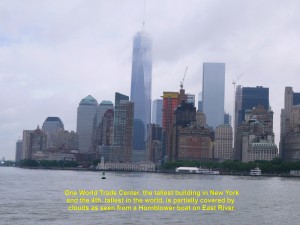
One World Trade Center, the tallest building in New York City as seen from a Hornblower boat on East River
Twin Towers
The Twin Towers of the World Trade Center at the same site as One World Trade Center were destroyed by terrorists’ attacks on 11 September 2001 and about 3 000 people were killed. They were built in 1970s each over 1350 feet(410 m) high,
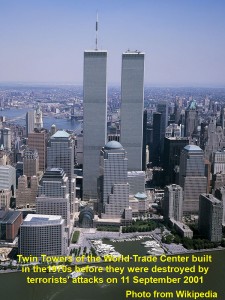
Twin Towers of the World Trade Center built in 1970s and destroyed by terrorists’ attacks on 11 September 2001
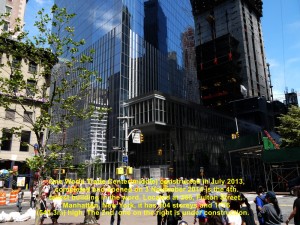
One World Trade Center has 104 storeys and is 1776 feet(541.3 m) high. The other building is under costruction.
Terrorists’ Attacks on World Trade Center on 9/11
In the morning of 11 September 2001 five al-Qaeda terrorists hijacked an American Airlines Flight 11 and crashed it into the North Tower. Several minutes later, another group of al-Qaeda terrorists hijacked a United Airlines Flight 175 and crashed it into the South Tower. The South Tower was burning for an hour before it collapsed, while the North Tower was burning for two hours before it too collapsed.
Since those terrorists’ attacks or 9/11 attack, airport security is tightened worldwide. Passengers have to take off their shoes and belts, and go through full-body scanners at airport check-points. Besides, liquids more than 100 ml, knives, box-cutters, cigarette lighters and other objects that may be used for threatening life are not allowed to be carried by passengers into airplanes. These strict checks cause long queues at airports.
Charging Bull
Later, we left Zuccotti Park and walked to Bowling Green. At this place there is one large sculpture of a bull. It looks muscular and fierce. It is leaning back on its haunches, lowering its head, curving its tail like a lash and getting ready to charge.
But it looks so adorable that tourists like to gather round it and hope to get a chance to take a photo with it. Besides, they like to touch its head, nose and horns believing that it will bring them good fortune, and its testicles believing that it will give them fertility or virility power.
The sculpture is known as “Charging Bull”, “Wall Street Bull” or “Bowling Green Bull”. Created by a sculptor, Arturo Di Modica and installed at the present site on Dec 21, 1989, it is made of bronze weighing 3 200 kg, standing 3.4 metres tall and having a length of 4.9 metres. It symbolizes aggresive financial optimism and prosperity. It is now New York City’s icon.
Having seen the Charging Bull, we walked to our tour-coach on Battery Place where Roanne, our patient and friendly driver, was waiting for us. When all of were on the bus, Roanne drove us to another tourists’ place of interest called “Times Square”.
Times Square
Times Square is in Manhattan, New York City, and it is one of the most popular tourists’ destinations in the world. Over 300, 000 tourists visit the place, daily.
In 1904, a 25-storey building was built for a local newspaper company, The New York Times. Hence, the open space in front of it was and still is called “Times Square”. This building is now known as “One Times Square”. It has a large ball atop and will illuminate a kaleidoscope of LED coloured lights when it is lowered on every New Year’s eve ushering in a new year. Hundreds of thousands of revellers will be there to watch it. It is a site for other important events, too.
Adjacent to Times Square is a small area known as Duffy Square that was dedicated in 1937 to Chaplain Francis P. Duffy(1871-1932) who was a member of the New York City’s U.S. 69th. Infantry Regiment. A statue of him is erected in the square in memory of him. In the same square, there is another statue. It is of George M. Cohan(1878-1942) erected in 1959 to commemorate his invaluable contribution to the entertainment industry.
Times Square is a place surrounded by over 40 Broadway theatres that offer live, large-scale performances, like musicals, plays and magic shows. Buildings at this bustling place are adorned with large billboards advertising foods, goods and Broadway shows or musicals like “The Lion King”, “Aladdin”, “Chicago”, “Mama Mia!” and “The Phantom of the Opera”. Over 13 million people watched performances in these theatres last year(2014).
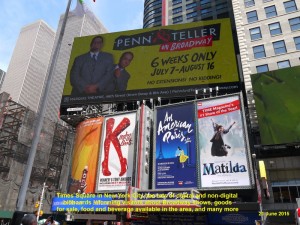
Multi-storey buildings in Times Square adorned with large bill-boards advertising Broadway musicals and shows
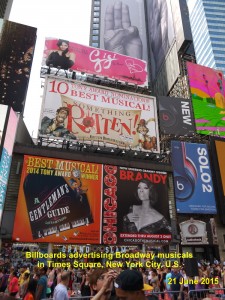
Multi-storey buildings in Times Square adorned with large bill-boards advertising Broadway musicals and shows
International Day of Yoga
We were in Times Square on 21 June 2015 and, coincidentally, it was International Day of Yoga. It was declared on 11 December 2014 by the United Nations General Assembly. So, in Times Square, there were hundreds of people doing yoga at the same time to celebrate the occasion.
Later, three young, pretty ladies from the “Chicago” musical group appeared in Duffy Square and performed a short dance for the visitors. From a flier I received, the dancers together with others would be performing at Ambassador Theatre nearby.
After spending several hours at the vibrant, crowded Times Square, we walked to Rockefeller Center which was a few hundred metres away.
30 Rockefeller Center
Rockefeller Center consists of several buildings between 48th. and 51st. streets in New York City. But we visited one of them which is known as 30 Rockefeller Center.
Built in 1931-1939, 30 Rockefeller Center has 70 floors and 850 feet(260 m) high. It has an observation deck on its top that offers 360-degree panoramic view of New York City. The deck is popularly known as “”Top of the Rock”.
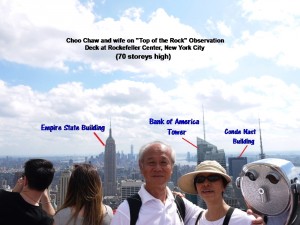
Choo Chaw and wife on “Top of the Rock”, an observation deck atop 30 Rockefeller Center, New York City
It was a sunny day when my wife and I went up to the “Top of the Rock”. Standing on the observation deck, we were mesmerized by the spectacular view of the whole city of New York, a city of hundreds of skyscrapers, seemingly, competing for heights.
At 4 in the afternoon we ended our New York City tour and went back to our hotel, Renaissance Woodbridge Hotel, at Iselin in Woodbridge Township. It is 31 km south-west 0f New York City.
U.S.A & Canada East Coast Travel
Part I Philadelphia & Washington D.C.
Part II Niagara Falls & Toronto City
Part III Colborne, 1000 Islands & Ottawa City
Part IV Montreal & Quebec City
Part VII Woodbury, JFK Airport & Home
U.S.A. and Canada East Coast Travel Part I(Philadelphia and Washington, D.C.)
U.S.A. East Coast Travel Part I(Philadelphia and Washington, D.C.)
(Philadelphia and Washington, D.C.)
Day 1 Friday, 12 June 2015
Air-Flight from Singapore to Philadelphia, U.S.A. Via Qatar
On 12 June 2015(Singapore date), my wife and I joined a group of Singaporeans headed by Andy Yuan, a tour-manager of EU Holidays Pte. Ltd.(Singapore), at Terminal 3, Changi International Airport in Singapore to experience a 10-day U.S.A.-Canada land tour. At 9.50 p.m. we flew off on a a Qatar plane and arrived at 4.50 a.m. at Doha Airport in Qatar on 13 June 2015(Singapore local time and date).
At the airport we immediately changed to another Qatar plane which departed at 5.a.m.(Singapore local time) for U.S.A.. At 8.45 a.m. on 13 June 2015(U.S. local time and date) we arrived at Philadelphia International Airport in U.S.A.. The total time we spent on the air-flight from Singapore to U.S.A. was about 16 hours!
Philadelphia, U.S.A.
On arrival at Philadelphia International Airport in the morning on 13 June 2015(U.S. local time and date), we went through a stringent security check, like taking off our belts(for men), socks and shoes, and emptying our pockets. After a long immigration clearance, we entered the arrival hall where a large U.S.A. national flag hanging down from the middle of the ceiling greeted us.
U.S.A. National Flag
The U.S.A. national flag has 50 stars that represent 50 states and 13 stripes that represent the 13 British colonies that declared independence from Britain in 1776. It was adopted on 4 July 1960.
Independence National Historical Park
Coming out of the airport, we boarded a coach driven by a middle-aged, friendly and courteous American lady, Roanne. She brought us straight to a well-known historical place in Philadelphia City. It is known as Independence National Historical Park which was established in 1948 due to the effort of Judge Edwin O. Lewis.
Independence Hall
In this famous area, there is a very important, well-preserved building, Independence Hall, which was built in 1732 and completed in 1753. It was in this building three very important documents were debated, drafted and signed leading to the birth of a new nation, the United States of America, in 1776. The documents were Declaration of Independence, the Articles of Confederation, and the Constitution of USA. These documents are displayed in the building. A statue of George Washington(the first President of U.S.A.) can be seen in front of the Hall.
Old “White House” Site
A site located over 100 metres from Independence Hall is marked as the location of the old residence(“White House”) of the first two Presidents, George Washington(1789-1797) and John Adams(1797-1801).
Liberty Bell
Besides, there is an old, large bronze bell which has a crack, Liberty Bell, displayed at the Liberty Bell Centre. It carries a biblical quotation: “Proclaim Liberty throughout all the Land unto all the inhabitants”. Created in Britain in 1752, it was used to summon lawmakers to legislative sessions and alert citizens to the public meetings and proclamations in Philadelphia. As the queue was long we did not get inside to see it. But we saw it through a glass-window outside.
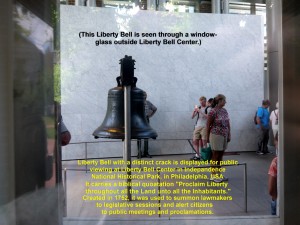
Liberty Bell as seen through a window-glass from outside the Liberty Bell Center at the Historical Park in Philadelphia, U.S.A.
Freedom Bell
There is another bell in front of Independence Hall. It is smaller and shiny known as “Freedom Bell”. It is put up by the U.S. Army in honour of their armed forces of the past, present and future.
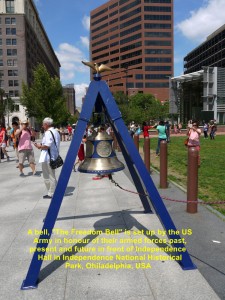
“The Freedom Bell” set up by the U.S. Army in honour of their armed forces of the past, present and future at the Historical Park, Philadelphia, U.S.A.
Independence Visitor Center
This centre provides information on the Independence National Historical Park. Besides, visitors can listen to talks on American history in “Once Upon a Nation” corner, buy souvenirs at a gift-stall , listen to American traditional musics or snap a photo with Rocky who was a heavyweight boxer in a movie made in 1976. Sylvestor Stallone acted as Rocky in the movie that earned three Oscars. Later, Stallone became the major star as Rocky in another four movies: Rocky II, Rocky III, Rocky IV and Rocky V.
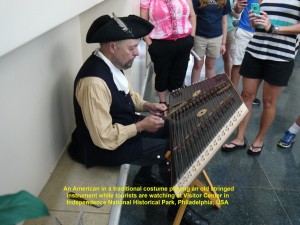
An American in a traditional costume playing a stringed instrument at Visitor Center at the historical park, Philadelphia, U.S.A.
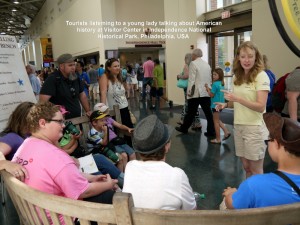
Tourists listening to a lady talking about American history at Visitor Center at the historical Park, Philadelphia
Hotel Gaithersburg
At 2.30 p.m. we left Philadelphia for Gaithersburg in Maryland. At 5 p.m. we arrived at the place and checked in at Hotel Marriott where we spent a night, comfortably.
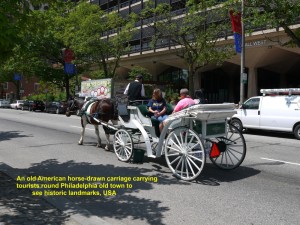
An old American horse-drawn carriage carrying tourists for sightseeing around Philadelphia Old Town, U.S.A.
Day 2 Saturday, 14 June 2015
After breakfast at 8 a.m. at Hotel Marriott, we went to National Mall and Memorial Parks in Washingto, D.C..
National Mall and Memorial Park, Washington D.C.
Established in 1965, National Mall and Memorial Parks have some national monuments and memorials erected to honour, respect and remember Americans who had made invaluable contributions and sacrifices to their nation. It is also a place for visitors to reflect and be inspired by them.
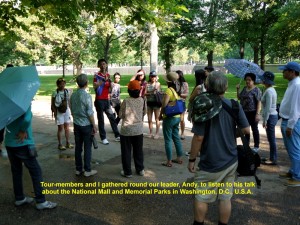
Andy Yuan, our tour-manager, talking to us about the National Mall and Memorial Parks in Washington, D.C., U.S.A.
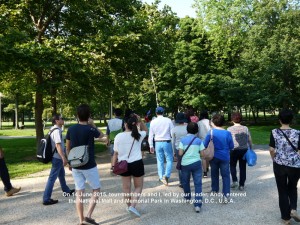
Tour-members and Choo Chaw entering the National Mall and Memorial Parks in Washington, D.C., U.S.A.
On the National Mall and Memorial Parks, we visited the following places:
a. Vietnam Women’s Memorial
Created in 1993, the memorial honours the civilian and military American women who rendered their services in the Vietnam War(1955-1975). This memorial shows a statue of three American military nurses taking care of a wounded soldier.
b. Vietnam Veterans Memorial
Completed in 1982, the memorial honours American soldiers who fought in the Vietnam War(1955-1975). It shows a statue of three American soldiers looking at the Wall with over 58 000 of their unfortunate comrades’ names in the distance.
The Vietnam War was a long, costly war fought between the communist North Vietnam and the democratic South Vietnam. The principal allies of the North were China and Soviet Union whereas the South was the United States.
Owing to strong protest at home, the United States ended the war in 1973. Two years later, the two regions were unified under Communist control. The twenty year-war resulted in more than 3 million people killed, including 58 000 Americans.
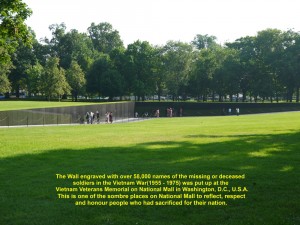
The Wall in the distance containing 58 000 names of missing or deceased American soldiers in the Vietnam War(1955-1975)
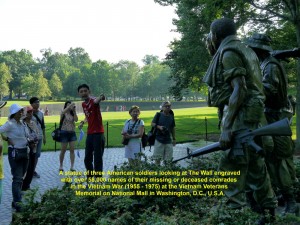
A statue of three American soldiers looking at The Wall in the distance at the Vietnam Veterans Memorial
c. Lincoln Memorial
Built in 1914 and completed in 1922, the memorial honours Abraham Lincoln, the 16th. President of U.S.A.(1861-1865). It houses a large statue of Lincoln sitting alone on a chair. His two famous speeches, “The Gettysburg Address” and “Second Inaugural Address” are engraved on a wall on his left.
d. Washington Monument
Constructed in 1848 and opened to public in 1885, Washington Monument, a 169 metre-high obelisk, honours U.S.A.’s first President, George Washington(1732-1799) who was in office from 1789 till 1797.
I saw it in the distance, clearly, from the Lincoln Memorial and its reflection in a pool of water known as Reflecting Pool. I saw it again while I was at the Thomas Jefferson Memorial.
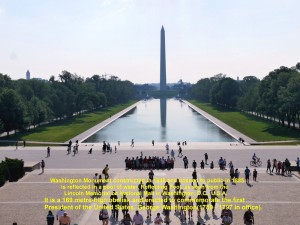
Washington Monument in memory of the first President of U.S.A., George Washington, as seen from Lincoln Memorial
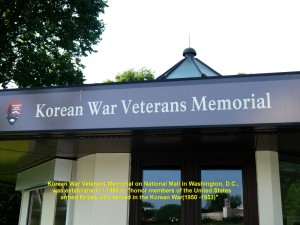
Korean War Veterans Memorial in memorial of the U.S.A. and U.N. soldiers involved in Korean War(1950-1955)
e. Korean Veterans Memorial
Korean Veterans Memorial was added to the National Mall and Memorial Parks in 1995 to dedicate to the American men and women who were involved in the Korean War(1950-1953). Casualty statistics of the soldiers who fought in the war are engraved in four black granite blocks at the memorial, viz. Dead(US 54 245 UN 628 833), Wounded(US 103 284 UN 1 064 453), Captured(US 7 140 UN 92 970) and Missing(8 177 UN 470267).
The Korean War(1950-1953) was fought between the communist North Korea and democratic South Korea. The U.N. and U.S.A. soldiers fought for the South, while China and Soviet Union fought for the North. It ended on 27 July 1953, when an armistice was signed creating a 250km-long Demilitarized Zone at 38th. parallel north that separated and continues to separate North and South Korea. Occasional clashes happen between the two sides.
At the memorial, there are 19 stainless steel statues of American soldiers, seemingly, “on patrol in a rugged terrain and a harsher weather in Korea” during the Korean War(1950-1953). They were created by a WWII veteran, Frank Gaylord. On a 50 metre-long, black, granite wall, over 2 500 photographic images of unidentified American soldiers involved in the war can be seen. They were sandblasted into the wall by Louis Nelson, a graphic designer.
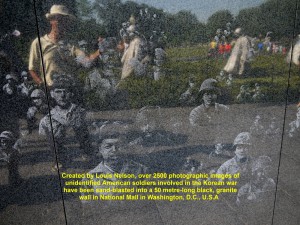
Images of unidentified soldiers involved in Korean War(1950-1955) on a 50 metre-long black granite wall at Korean War Veterans Memorial
f. Thomas Jefferson Memorial
This memorial was built in dedication to Thomas Jefferson(1743-1826) who was the third President of U.S.A.(1801-1809). He was involved in drafting and signing the “Declaration of Independence” in 1776 and a strong supporter of democracy and human rights.
In the memorial building, a tall statue of Jefferson was erected and surrounded by some of his speeches engraved on the walls. The speeches are his expressions of democracy, liberty, freedom, human rights, etc.
g. Martin Luther King, Jr. Memorial
In 2011 Martin Luther King Jr. Memorial on Memorial Mall was created to dedicate to King.
King was a well-known civil rights activist seeking equality for the marginalised African Americans and helping to bring about the Civil Rights Act of 1964 and the Voting Rights of 1965.
On 23 August 1963, King made a famous public speech, “I Have a Dream”, from Lincoln steps in front of over 250 000 civil rights supporters on Memorial Mall in Washington, D.C., U.S.A.
In 1964 he was awarded the Nobel Peace Prize. On 4 April 1968 in Memphis, Tennessee, he was assassinated at the age of 39. Third Monday of January every year since 1986 is a federal holiday in U.S.A. in honour of the King.
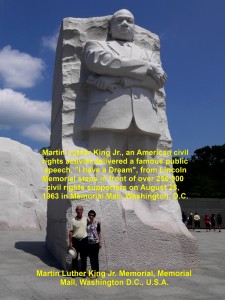
A huge statue of Martin Luther King, Jr., an American civil rights activist(1929-1968), at the Martin Luther King, Jr. Memorial
h. The United States Capitol
The United States Capitol sitting on top of Capitol Hill is the seat of the United States Congress consisting of the Senate and the House of Representatives. Opened in 1899, it is built in neoclassical architectural style. It holds major events, like presidential inaugurations, Independence Day celebrations, National Memorial Day and public paying their last respect to important persons lying in state.
Its dome is now under restoration and scheduled to be done in 2017.
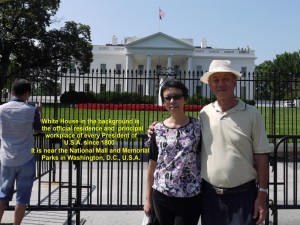
Choo Chaw and wife and the White House, the residence and workplace of U.S.A. presdidents since 1800, in the distance
i. White House
Located at 1600 Pennsylvania in Washington, D.C., White House is the place where United States Presidents live and conduct the government of the nation. John Adams was the first president to occupy the House in 1800.
It has become a symbol of Presidency and stands for the power and statesmanship of the Chief Executive.
Fashion Centre or Pentagon City Mall, Arlington
After the visit to the National Mall and Memorial Parks in Washington, D.C., we went to Arlington to have lunch at the largest enclosed shopping mall there, Fashion Centre or Pentagon City Mall. It houses 170 retailers and restaurants. After lunch at 2 p.m., we left the mall for Harrisburg.
Hershey’s Chocolate World
On the way to Harrisburg, we stopped at a famous chocolate shop, Hershey’s Chocolate World, where we learnt about chocolate making and bought a few kinds of chocolate. It has a few attractions, like Great Chocolate Mystery in 4D, Trolley Works and Wrap Happiness.
Hotel Radisson in Harrisburg, Pennsylvania, U.S.A.
Then we continued our journey and arrived at Harrisburg in Pennsylvania at 8 p.m. where we stayed for a night at Hotel Radisson.
U.S.A & Canada East Coast Travel
Part I Philadelphia & Washington D.C.
Part II Niagara Falls & Toronto City
Part III Colborne, 1000 Islands & Ottawa City
Part IV Montreal & Quebec City
Part VII Woodbury, JFK Airport & Home
Bangkok, Ayuthaya Travel (Part I)
Filed under: Ayuthaya Travel (Part I), Bangkok, Uncategorized
Bangkok began as a small village and later a trading centre. It developed rapidly when King Thaksin made it the new capital of Thailand in 1767. The old one, Ayutthaya, which is 80 km north of Bangkok, was captured by the Burmese soldiers in 1767.
People and Attractions
Bangkok has now become a fast growing city in Asia with a population of over 10 millions. Although it has become a financial and commercial hub of Thailand with modern, tall buildings, it still preserves the old ones which have historical, religious and cultural significance.
Known as the “City of Angels”, it attracts over 10 million tourists annually. It is well-known for Buddhist temples with unique architectural designs, food, shopping centres, night bazaars, roadside stalls, entertainment, historical and cultural sites.
Over 90% of its people of diverse races have a common religion, Buddhism and culture. There are about 400 Buddhist temples, 55 mosques, 10 churches and 2 Hindu temples in the city. As it has so many temples, it should also be known as the “City of Temples”. The Thais are helpful and friendly, and they live up to the country’s motto: “Land of Smiles”.
“Venice of the East”
Located on the east bank of River Chao Phraya in a low delta area with many rivers and canals (khlongs), Bangkok is known as “Venice of the East”. In olden days, canals or khlongs were built mainly for irrigating paddy fields and water transport. Many houses, shops and markets were built along those that were used as waterways. Some of them had floating markets. But nowadays many have been filled up to make way for roads.
Sinking Bangkok
Traffic jams and air-pollution are two major problems in the city now. Hopefully, the Thai government will find quick solutions to these problems, otherwise tourism will be affected badly. It is reported that the vibrant city is sinking and some parts of its land may be under water in 20 years’ time.
Bangkok and Ayuthaya, Writer’s Next Destinations
After an interesting trip to Chiang Mai, Chiang Rai and the Golden Triangle in Thailand in July 2006, my wife and I were off again to two more cities in Thailand in December 2007, i.e. Bangkok and Ayuthaya
On 4 December 2007, we left Kuala Lumpur Airport by an Air Asia airbus plane, A320 and, two hours later, we arrived safely at Bangkok’s new airport, Suvarnabhumi Airport, which was one year-old then. Built 28 km south-east of Bangkok, it is an airport which is comparable to other large international airports in the world. Its large, massive steel-roof looks like a row of curved and oval-shaped parachutes from a distance.
As a railway linking the airport and the Makkasan Station in the downtown was not ready yet, we took a taxi and in less than an hour to reach our budget hotel known as Bangkok City Inn in the downtown.
Below is the itinerary of our unforgettable Bangkok and Ayutthaya tour from 4 December 2007 till 7 December 2007.
1. Ratchadamri Nightlife and Central World
2. Ayutthaya : Bang Pa-In Palace
3. Ayutthaya : Wat Mahathat, Wat Phra Si Sanpet, Wihan Phra Mongkhon Bophit
4. Chao Phraya River Boat Cruise
5. Suan Lum Night Bazaar
6. The Grand Palace, The Emerald Buddha Temple, Temple of the Reclining Buddha, Wat Intrawihan
7. Anantasamakhon Throne Hall, King Rama V Monument, Democracy Monument, Victory Monument
8. Silom, Patpong and Chinatown
9. Thai Body Massage, Floating Market, Khlong Saen Saep and Phetburi Road
10. Bangkok City Inn, Vishnu Kurmavatara and Departure for Malaysia
Day 1 : Tuesday, 4 December 2007
Ratchadamri Road Nightlife
After checking in at Bangkok City Inn in Bangkok City we left the hotel in the evening and went to look for roadside food-stalls nearby to savour the cheap but nutritious Thai food for dinner. We found a row of them along Soi Rajadamri 2 which was nearby and tried their spicy, sweet and sour “tom yam”, fried rice, grilled chicken as well as fresh coconut drinks to cool our body system. Later, we found out that almost every street in the downtown had cheap roadside food-stalls.
Having finished our sumptuous meal we started our city sightseeing tour in Bangkok. The first place we visited was the busy Ratchadamri Road. The traffic was heavy on the road. As it was already evening, we saw lots of small stalls along both sides of the road selling all kinds of goods. They attracted a large number of both tourists and local people. The walkway was made narrow by the stalls and was so crowded that we had to be careful all the time not to bump into other people.
Central World
Then we walked to Bangkok’s largest shopping mall which is known as Central World. Located at the junction of Phloenchit Road and Ratchadamri Road, the modern multi-storey building houses many shops selling branded goods, such as watches, electrical and electronic products, jewellery, silverware, clothes, shoes, perfumes, cosmetics, etc. Besides, it has 21 cinema screens, 18 karaoke rooms and 28 bowling lanes. It is a place worth patronizing if you have lots of money.
Outside the Central World, we saw hundreds of people chill-out at two open-air bistros which had bands playing loud musics and local singers singing English and Thai songs. Adjacent to the bistros was an open space where there were many decorations including a tall Christmas tree lit with hundreds of small coloured bulbs that gave an atmosphere of Christmas festivity. This area was a popular place for families and young couples.
Day 2 : Wednesday, 5 December 2007
Travel to Ayutthaya
On the morning of 5 December 2007, we joined a group of tourists from different parts of the world for a tour in the ancient Ayutthaya to learn about its interesting past history, heritage and culture. At about 8.30 a.m. we departed Bangkok by a coach and headed north to the city.
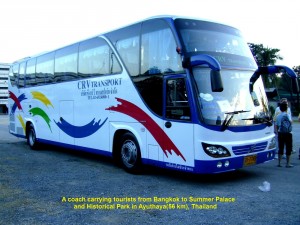
A coach bringing visitors from Bangkok City to the Summer Palace and Ancient Royal Palace in Ayuthaya, Thailand
Ayutthaya
Ayutthaya, located 86 km north of Bangkok, was founded in 1350. Since then it had been the capital of the Siamese Kingdom for 417 years before it was beseiged by the Burmese in 1767.
After the Burmese attack many buildings especially the temples were left in ruins and not much work has been done to restore them.
Ayutthaya has been declared as a World Heritage Ancient City as the ruined sites are a testament to its rich history and culture in its heyday.
Arrival at Summer Palace(Pang Pa-In Palace)
After travelling for about an hour we arrived at a famous ancient royal palace known as Bang Pa-In Palace or Royal Summer Palace which is 30 km south of Ayutthaya.
Before entering the palace a large portrait of the present Thai king greeted us. When we were inside the palace complex we were amazed to see a beautiful landscape of large manicured garden, neat rows of trees and flowers, lakes and mansions of European and Asian architectural styles.
Summer Palace (Pang Pa-In Palace)
In 1632 King Prasat Thong (1629-1659) was the first Thai king to build a palace as his residence there. Later, it was abandoned until King Mongkut or King Rama IV (1851-1868) restored it and made it as his residence. Subsequently, more mansions were built at the site by other kings. Many existing buildings were constructed during the reign of King Chulalongkorn or King Rama V (1868-1919) who loved European architectural styles.
The present king, King Bhumibol Adulyadej or King Rama IX, who lives at Chitralada Palace in Bangkok, occasionally, lives there and holds receptions and banquets.
After studying a pictorial map showing the locations of the mansions we toured the palace. Our Thai tour guide, Chamrong, who preferred to be called “James Bond” led us to the important mansions and patiently told us their histories. We toured the palace complex for an hour and found some buildings fascinating and worth mentioning below.
There are two parts of the Summer Palace: the outer and the inner.
1. The buildings in the outer part of the palace include:
a. Golden Palace of the God King Shrine (Ho Hem Monthian Thewarat)
Standing under a large old Bodhi tree is a small stone structure in the form of a Khmer-styled shrine. It was built by King Rama V in 1880 and dedicated to King Prasat Thong.
b. Assembly Hall for Ronal Relatives (Saphakhan Rajaprayon)
A royal residence built in 1879 for King Rama V’s brothers
c. The Divine Seat of Personal Freedom (Phra Thinang Aisawan Thiphya-Art)
This beautiful, brightly-coloured Thai architectural styled pavilion with 4 porches and a spire roof was built in a pond by King Rama V in 1876. It houses a bronze statue of King Rama V in a Field Marshal uniform that was placed there by his son, King Rama VI.
d. Excellent and Shinning Heavenly Abode (Phra Thinang Warophat Phiman)
A royal residence built in a neo-classic architectural style by King Rama V in 1876 as his residence and throne hall. Oil paintings depicting important events in Thai history and scenes from Thai literature can be seen in the audience chambers and ante-rooms.
e. Statues and Tree Sculptures in Summer Palace Garden
In the Summer Palace Garden there are several statues of ancient Greek figures and tree sculptures in animal figures. There is a bridge with some white marble statues of Greek figures and some in the garden. Besides, trees have been shaped into animal figures, like elephants and rabbits.
2. The buildings in the inner part of the Palace include:
a. Garden of the Secured Land (Phra Thinang Uthaya Phumisathian)
This is a large royal residence built at the expressed wishes of the present queen, Queen Sirikit. In 2006 Queen Elizabeth II of England was invited to stay there by the Thai king. She went to Thailand to celebrate his 60th. anniversary reign. This mansion replaces the wooden one which was accidentally burnt down during repair in 1938
b. The Sages Lookout Tower (Ho Withun Thasana)
This is a tall observatory tower built by King Rama V in 1881 for viewing the scenery of the countryside.
c. Royal Residence of Heavenly Light (Phra Thinang Wehart Chamrun)
It is a large two-storey Chinese-styled mansion given by a group of local Chinese businessmen as a gift to King Rama V in 1889
A Russian prince who visited the mansion in 1889 aptly described the striking red and yellow building as follows:
“It is really a palace of romance, with ornamented tiled floors, massive ebony furniture, gold, silver, and porcelain freely used for decorative purposes, and delicate fretwork on the columns and on the windows.”
There is a Chinese-styled throne on the ground floor. Besides, the building has an altar enshrining the plates with the names of King Rama IV, King Rama V and their respective queens. This mansion was a favourite residence of King Rama VI (1910-1925).
Journey to Ayuthaya
After a tour of the splendid Summer Palace we continued our journey to Ayuthaya which is well-known for ruined ancient temples
Ayutthaya was an important religious centre until the Burmese captured it in 1767. Many temples were burnt down by the enemies. Some large ruined ancient temples can still be seen in the city and are now a tourist attraction.
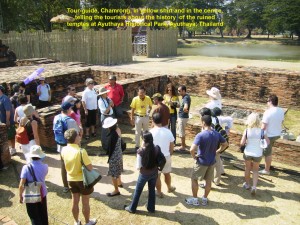
Chamrong, the tour-guide, telling the tourists about the ruined temples at the Ayuthaya Historical Park
On arrival at Ayuthaya, we visited some of the famous places of worship including the following:
a. Wat Mahathat
This ruined temple was built during the reign of King Boram Rachathirat in 1374 and completed during the reign of King Ramesuan (1388-1395) in 1390 to house the Lord Buddha’s relics. It was also used for the royal religious ceremonies as well as a place of worship by the locals and visitors.
During the Burmese attack in 1767 it was burnt down. Since then it was left in ruins. In the centre of the temple there was a large corn cob-shaped pagoda or prang (built in a Khmer-styled tower) that contained the Buddha’s relics. It collapsed in the reign of King Songtham (1610-1628). During the reign of King Prasat Thong (1630-1655), its restoration was completed and its height was greatly increased to 50 metres . Later the pagoda collapsed again due to an earthquake that happened during the reign of King Rama VI. The collapsed pagoda can still be seen at the temple.
Surrounding the pagoda are large and small stupas or chedis as well as large and small statues of Buddha. Many of these statues are either headless or torsoless. According to our tour Thai guide, Chamrong, looters had decapitated the statues and sold the heads to antique collectors. Besides, many relics of Buddha and other artifacts were stolen from the temple. Even the bricks were not spared. But visitors can still see some of the valuable temple artifacts recovered by archaeologists at the Chao Sam Phraya National Museum in Ayutthaya, e.g. Buddha statues, votive tablets, fish-shaped boxes and golden plaques in the shape of animals.
At the temple we were fascinated by a stone head of Lord Buddha image which appears out of the exposed roots of an old, large Bodhi tree. It is believed that the rest of its body is buried in the roots. A guard standing a few metres away from the head advised us not to let our heads be above that sacred head if we wanted to go near it to have a closer look.
Then we left that temple and went to another one nearby. It was Wat Phra Si Sanpet.
b. Wat Phra Si Sanpet
This temple was built in the large compound of a royal palace in 1448 without a monastery. It was used for royal ceremonies and religious rites. Besides, its compound was used for cremating the bodies of kings and royal family members.
Three large pagodas (stupas) were built to house the remains of the Siamese kings ( King Boroma-Tri-Loka-Nat, King Boroma-Rachathirat III and King
Ramathibodi II) and smaller ones the remains of the royal members.
Adjacent to this temple was a grand hall (Wihan Luang). It housed a tall golden Buddha statue (16 metres tall) known as Phra Si Sanpet. The statue covered with a layer of about 172 kg of gold was built by King Rama Thibodi II in 1500.
Unfortunately, in 1767 the Burmese came and burnt down the hall as well as the temple nearby. They also removed the gold from the large Buddha statue. A few tall pillars are the only remains of the grand hall that a visitor can see now. The large Buddha statue has been moved to the Phra Si Sanpet chedi in Wat Phra Cetuphon (Wat Po) in Bangkok.
c. Wihan Phra Mongkhon Bophit
This temple located in the old royal palace compound houses a large statue of Buddha known as Phra Mongkhon Bophit (12.45 metres high) and the latter is covered with gold leaves. This statue was made in 1538 on the order of King Chairachathirat.
Besides foreign tourists who thronged that ancient royal palace, lots of local people also visited the place as it was a public holiday in celebration of their king’s 80th. birthday.
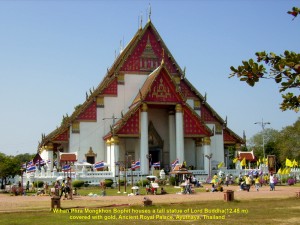
Wihan Phra Mongkhon Bophit houses a large golden statue of Lord Buddha at Ancient Royal Palace, Ayuthaya, Thailand
Elephant Show and Elephant Ride
Nearby, there was a mini elephant show and many people both foreign and locals alike were enjoying riding elephants. There were some who bought bananas and sugarcane to feed some hungry elephants in a large tent. The whole place looked like a carnival then.
Chao Phraya River Boat Cruise
After a tour of Ayutthaya’s two ancient ruined temples, viz. Wat Mahathat and Wat Phra Si Sanpet, and a grand hall, Wihan Phra Si Sanpet, we travelled south in our coach to Wat Chong-lom Pier in Nonthaburi. On arrival, we boarded a luxurious cruise boat of about 50 metres in length belonging to Grand Pearl Company Limited at Bangkok. It would take us down the large River Chao Phraya for a river-sighthseeing cruise.
Before the boat started, I was standing on the pier and busy snapping photos of the river sceneries. Then a boy appeared in front of me proudly showing off a large fish. I understood what he wanted me to do. So I snapped a photo of him with the fish and he grinned. Then his father holding a fishing rod came and teased him.
Soon the boat left the pier. As it was cruising slowly down the river, we enjoyed the sights and sounds of the river. We saw boats of different shapes and sizes past by, water hyacinth plants floating down the river, villages and towns on both sides of the river and anglers standing on river banks hoping for a big catch. Occasionally, large fish were seen jumping out of the water.
As we were getting nearer to Bangkok City, we saw lots of landmarks, historical and modern and went under a few old and modern bridges.
When we reached Bangkok we saw a spectacular sight of the city. It is a city of tall buildings of different heights, shapes and sizes. They are hotels, government buildings, shopping centres and condominiums. Many brightly-painted Siamese temples, a few churches and the famous Grand Palace can be seen too. Besides, the river is bustling with boats that ferry passengers across the river and carry tourists for a river-sightseeing tour.
After over two hours of the enjoyable river boat cruise we finally arrived at the River City Shopping Complex Pier and went back straight to our hotel to rest.
A Walk to Suan Lum Night Bazaar
In the evening, my wife and I decided to visit Suan Lum Night Bazaar. The bazaar is near the crossroads of Witthayu (Wireless) Road and Rama IV Road. Looking at the city map we thought it was not far from our hotel. So we decided to walk there. On the way, we came across a few groups of loyal hotel staff with burning candles standing in front of their hotels and waiting to celebrate their king’s 80th. birthday. After walking for half an hour we were surprised that we had not reached the bazaar yet. We realized the map we used was not drawn to scale. It took us another 15 minutes of walking before reaching our destination.
It was a sight of relief when we arrived at Suan Lum Night Bazaar. Feeling tired and famished, we made a beeline to the Thai food court, ordered some food and gobbled down all of it quickly. Then we took our time to browse a few hundreds of stalls.
Suan Lum Night Bazaar
This night bazaar which opens from 3 p.m. till midnight daily is a place where hundreds of stalls sell a wide variety of Thai products ranging from accessories, shoes and clothes to antiques, souvenirs, watches, arts and handicrafts. Besides, a traditional Thai puppet theatre, pet stalls, restaurants, pubs, food court, foot massage rooms and many more are found here. In other words, this night bazaar offers practically anything a visitor wants.
At a stall we were surprised to see aluminium cans made into objects for sale, like alarm clocks and “tuk-tuks”. Thais are truly creative and enterprising people.
After buying some articles at bargain prices and window shopping at the bazaar, we decided to go back to our hotel by a “tuk-tuk” (a three wheeled vehicle which runs on liquefied petroleum gas or LPG) instead of walking back.
Continue in Ayuthaya Travel (Part II)
Bangkok , Ayuthaya Travel (Part II)
Filed under: Ayuthaya Travel (Part II), Bangkok, Uncategorized
[continued from Bangkok , Ayuthaya Travel (Part I)]
Bangkok , Ayuthaya Travel (Part II)
Day 3 : Thursday, 6 December 2007
On the morning of 6 December 2007, we hired a “tuk-tuk” to bring my wife and I around the city for sightseeing. A young Thai man named See was our “tuk-tuk” driver and our tour-guide too.
The first place he brought us was the famous Grand Palace. When we arrived there we felt extremely disappointed to be informed that the palace, a Thai’s icon, was closed to public then. It was going to hold the Thai King’s 80th. birthday celebration. The palace is truly a grand and stunning one. Below is the description of it:
The Grand Palace
Located on the eastern bank of River Chao Phraya in the Rattanakosin District, this beautiful palace in a large area of over 200 000 sq. metres is surrounded by a high and unfriendly-looking white wall.
The Grand Palace was built in 1782 during the reign of King Rama I (1737-1802) who used it as his royal residence. Subsequently, other Thai kings lived there too from the 18th. century till the middle of the 20th. century.
The last king to live there was King Rama VIII or King Ananda Sun Mahidol(1925-1946). The present king, King Bhumibol Adulyadej (King Rama IX), who succeeded him (his brother) does not live there. Instead, he lives at another place not far from the old one and is known as Chitralada Palace.
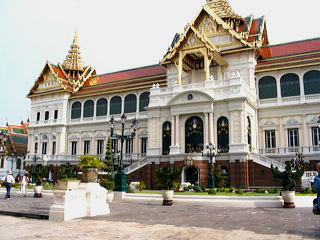
The Grand Palace, Bangkok
The Grand Palace is now used for religious, state and royal ceremonies. It has several buildings built in unique Siamese architectural style.
The Emerald Buddha Temple (Wat Phra Kaew)
In the compound of the Grand Palace is Thailand’s grandest and most sacred Buddhist temple known as Wat Phra Kaew. Built in 1785, it houses a Buddha statue known as Emerald Buddha Statue. There are other statues, such as monkey kings and giants resembling the characters in the Ramayana mythology, around the golden temple. Besides, artworks from art masters during the Rattanakosin era are displayed here.
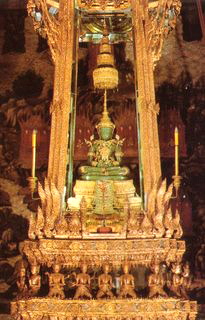
The Emerald Statue of Buddha, Bangkok
As we could not visit the Grand Palace and Wat Phra Kaew we visited a famous temple known as Wat Pho or Wat Phra Chetuphon nearby.
Wat Pho or Wat Phra Chetuphon (Temple of the Reclining Buddha)
Wat Pho houses a large reclining Buddha statue of 46 metres long. The walls inside the temple are beautifully painted with colourful pictures depicting the Buddhist way of life of the Thai people.
This temple has a monastery for the monks. Besides, it is the birthplace of the traditional Thai massage school. Around this temple are several beautiful stupas and large statues of guards with serious looks at some entrances of the temple.
Having completed the tour of this temple, we headed north-east to another famous temple, Wat Intrawihan
Wat Intrawihan
Located at 114, Wisutkasat Road in Phra Nakhon District, Wat Intrwihan was built towards the end of the Ayutthaya Period. Standing tall in the compound is a large golden statue of Buddha. It was built in the reign of King Rama IV in 1867 and completed in the reign of King Rama VII. It claims to be the world’s tallest standing Buddha statue and is known as Phra Si Ariyamettraiya or Luangpor Toh.
While we were at the temple we were shocked to see many cats and dogs roaming
freely in the compound and their excreta was all over the place. As we walked around the temple we were careful not to step on it.

Wat Intrawihan
Anantasamakhon Throne Hall
Located in the Dusit District is a majestic building of marble built in the Italian Renaissance style. It was constructed during the reign of King Rama V and completed in the reign of King Rama VI.
It receives foreign dignitaries and holds the Royal Advisory Council meetings. It was once used for parliamentary meetings.
In 2006, royal personages from 25 countries celebrated King Bhumibol Adulyadej’s 60th. anniversary of monarchy reign at this building. He is the world’s longest reigning king.
King Rama V Monument
In front of Anantasamakhon Throne Hall is a large open space known as Royal Plaza. In the centre there is a monument of an equestrian statue of King Rama V (King Chulalongkorn) in a field marshal uniform. The Thai people loved him so much that they raised fund to get the statue cast by a French sculptor in Paris and placed it there in 1908 when he was still alive.
King Rama V (1853-1910) succeeded his father in 1868. He had travelled to many foreign countries in Asia and Europe and learned about their reforms and governments. With that knowledge he modernized his government. Besides, he abolished slavery in his country. In 1896 he built the first railroad in Thailand connecting Bangkok and Ayutthaya. His subjects called him “The Great Beloved King”.
During his reign he had four queen consorts and some royal common wives. He was the only Thai king who had the most number of children, about 77. His second son, Vajiravudh (1881-1925), succeeded him as the sixth king (King Rama VI) of the Chakri Dynasty in 1910.
Not far from the monument, we saw a colourful arch with a large royal emblem at its top at the crossroads of Ratchadamnoen Nok Road and Si Ayutthaya Road. It was erected to celebrate the Thai king’s 80th. birthday. We also saw four horsemen, police and many people lining the roads from Chitralada Palace to the Grand Palace. They were wearing yellow T-shirts and holding national flags and yellow royal flags waiting to cheer their king. The king who would pass them while he was on his way to the Grand Palace to celebrate his 80th. birthday.
{To the Thais, yellow symbolizes devotion to their beloved king. On the evening of the previous day (5 December 2007), the king’s birthday was celebrated nationwide with festivities and prayers, and thousands of people packed the streets near the Grand Palace to watch a spectacular firework display.}
Democracy Monument
Located on a large roundabout where Ratchadamnoen Klang Road, Prachathipatai Road and Bandinsor Road meet, is the Democracy Monument. It was erected in 1939 to commemorate the June 1932 military coup which resulted in the establishment of the constitutional monarchy.
In the centre of the monument is a turret which has two golden offering bowls on its top. The “1932 Constitution” is on the top bowl. There are four wing-like structures standing round the turret. They represent the army, navy, air force and police guarding the Constitution.
Victory Monument
There is another monument not far from the Democracy Monument. It is known as the Victory Monument which was erected in 1941 on Bangkok’s largest roundabout where Phahon Yothin Highway, Phaya Thai Road, Ratchawithi Road and Din Daeng Road converge. This monument commemorated the Thai victory in a brief, bloodless war with the French colonialists in Indo-China. The victory led to Thailand annexing some territories in western Cambodia, and northern and southern Laos. Some of these territories were formerly Thailand’s and ceded to France in 1883 and 1904.
The monument has 5 human statues standing round a tall obelisk. The statues symbolically represent the army, navy, air force, police and civilians.
Mahboonkrong Centre(MBK Centre)
After the interesting Bangkok City tour, we went to a popular shopping centre known Mahboonkrong Centre(MBK Centre) which is near BTS Central Station (Siam).
There are a few more shopping centres near it, e.g. Siam Centre, Siam Discovery Centre and Siam Paragon. Later, we went back to our hotel to have a rest.
Silom Road
In the evening, my wife and I went to Silom Road by “tuk-tuk” again as it could manoeuvre easily in a traffic jam and reach any place quickly.
Silom Road is in the heart of the Central Business District of Bangkok. Multi-storey buildings line the road. They house banks, trading companies, insurance companies, finance companies, law firms, shopping centres, luxurious hotels, etc.
The road is full of traffic and the walkways are always crowded during day and night. This place is easily accessible by either Rama 6 Road (an expressway), Rama 4 Road or the Skytrain.
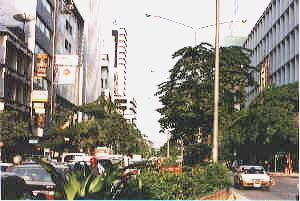
Silom Road during the day
When night falls roadside food stalls and other stalls appear and attract influxes of visitors both locals and tourists. Most of the tourists would head for the red light district of Patpong which is very near to the Sala Daeng Skytrain Station.
Patpong
Patpong has two short roads, Patpong 1 Road and Patpong 2 Road, which are parallel to each other and sandwiched in between Silom Road and Surawong Road.
Patpong belongs to the Patpongpanich family. It is estimated to be worth over US $100 millions! When the family bought it in 1946 they built a road, Patpong Road, and shophouses for rent along the road.
A Red Light District
Later in 1968 the whole area was transformed into a red light district catering mainly for the U.S. soldiers who needed recreation and recuperation (R & R) after their duties in Vietnam during the Vietnam War (1965-1975). Its notoriety spread far and wide by word of mouth in the 1970s and 1980s. In fact, the place has been featured in many western movies such as Deer Hunter (1978) and Miss Saigon(1989). Besides, many authors have written about it in their novels.
Since the Vietnam War was over in 1975 the place has become a tourist attraction and many foreign tourists as well as Thais like to patronize the bars there.
Night Market
In the 1980s, the enterprising Patpongpanich family set up stalls for rent in the middle of Patpong 1 Road. These stalls are now a busy night market selling goods ranging from souvenirs, caps, T-shirts and shoes to jewellery and watches. Their presence has affected the night entertainment business of the bars there.
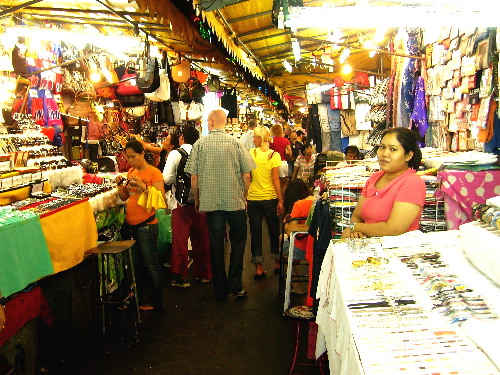
Night market in the Patpong Red Light District
Hard Bargain
From Silom Road, my wife and I walked to Patpong 1 Road. There were many stalls on the latter road which was closed to traffic. Stopping at one of them, my wife thought of buying a child’s frock for our grand-daughter. She was shocked when she was told by the seller that it cost 850 baht! After a few minutes of bargaining she was finally offered 200 baht. Tourists should make a hard bargain there if they want to buy something, otherwise they may be fleeced by unscrupulous sellers.Then we decided to see the bars along Patpong Road. As we were walking past a few of them and trying to get a glimpse of some activities inside, some touts were inviting us in for a sleazy show. As we had no intention of watching it we did not heed them but kept on walking. I remember what our Ayutthaya tour guide had told us about these Patpong bars. He said, “If you go inside with a lot of money, you will come out without a cent!”
Chinatown (Yao Wa Rat)
Having seen the Patpong area, we left for Chinatown that is not far from Patpong. It is a place where shops sell all kinds of products which are mostly Chinese and Thai, such as herbs, jewellery, clothes, watches, handbags, electrical and electronic gadgets, etc.
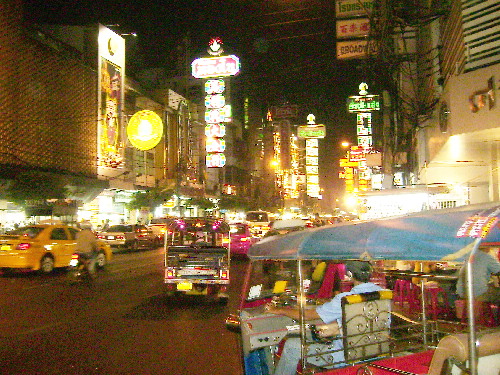
Chinatown at night, Bangkok
Sea Food
When night falls, roadside stalls in Chinatown suddenly appear and do brisk businesses, especially those that cater to food lovers like us. When we were there we looked for a sea food restaurant. We found one which was selling crabs, prawns, squids, snails, fish and cockles. The cooks could grill, steam and fry them for customers. Although they were not cheap we asked for a large crab and told a waitress to get it grilled over red hot charcoal. We tried other dishes too. We finished the delicious meal with some fleshy Siamese durians and a refreshing fresh coconut drink . Then we left Chinatown for our hotel.
Day 4: Friday, 7 December 2007
Thai Body Massage
On the morning of our last day in Bangkok, we went for a Thai body massage at a shop, Mr. Feet, which is a few doors away from our hotel, Bangkok City Inn. While we were fully clothed, our young masseuses expertly massaged our limbs and the back of our bodies. Occasionally, we felt a little pain in some parts of our bodies when strong pressure was applied. After having been massaged for an hour we felt relaxed and energized. All our muscular and joint pain due to walking too much during our last three days in Bangkok and Ayutthaya miraculously disappeared. Before we left the shop I saw a floating market in one of the large pictures printed by the Thai Tourism Board on a wall. We regretted to give it a miss as we had to depart for Malaysia in the evening.
Floating Market
In the early days, there were many floating markets in rivers and man-made canals or khlongs which were lined with dwelling-houses in Thailand. Later, when supermarkets were opened and people found it more convenient to shop at these places. Consequently, the number of floating markets dwindled a lot. Nowadays, there are few floating markets left in Thailand and they attract many tourists.
At a floating market, ladies in straw hats row about their small boats laden with fruits, vegetables, food, flowers, groceries, etc. looking for customers who usually live along the waterways. A busy floating market is a fascinating sight as you can see it in the photo on the left.
The largest floating market in Thailand is at Ratchaburi which is 101 km west of Bangkok. Small floating markets can be found in Bangkok, e.g. Tailing Chan and Wat Sai floating markets.
After a Thai body massage, we decided to walk to Phetburi Road nearby. While crossing a bridge over a large canal or khlong known as Khlong Saen Saep, we saw boats plying on the waterway.
Khlong Saen Saep
Khlong Saen Saep is a long canal connecting Khlong Phadung Krungkasem which flows into River Chao Phraya in the west to Prachinburi and Chachoengsao in the east. Today, it is a busy waterway which has 30 stops for over 100 passenger boats.
Originally, the canal was built to transport soldiers and weapons to Cambodia which was in conflict with Thailand during the reign of King Rama III.
After crossing the bridge we came to a long road, Phetburi Road.
Phetburi Road
Phetburi Road is a busy road lined with large buildings. It has a lot of traffic during day and night. Lots of stalls selling cheap food and snacks can be found on the roadside and five-foot ways in the morning. It is indeed a bustling place. Photos below show different types of stalls along the road.
From the Phetburi Road three tall building could be seen in the distance. One of them which was 88 storeys high, Baiyoke Sky Hotel, was the tallest in Bangkok.
Thailand General Election
While we were in Bangkok, the Thai people were gripped with a general election fever. The previous government of Prime Minister, Thaksin Shinawatra, was toppled by a military coup in 2006.
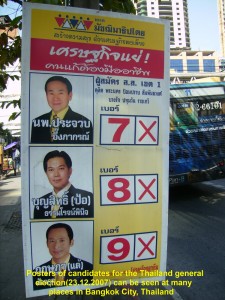
Posters of candidates for the Thailand general election 2007 can be seen at many places in Bangkok City
Posters of candidates standing for the coming Thailand general election on 23 December 2007 could be seen along major roads in the city. The photo on the right showing three candidates was taken along Phetburi Road. Besides, large portraits of the Thai king were put up in front of large buildings like hotels and government buildings in celebration of the king’s 80th. birthday.
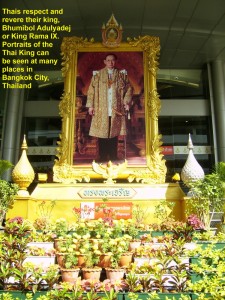
Thai King’s portraits can be seen at many places in Bangkok City, Thailand. The king is respected and revered by Thais.
While walking along Phetburi Road we were surprised to see lots of electric cables and telephone wires hanging untidily high above the road. It was undoubtedly an unpleasant sight.
Later we walked back to the budget hotel, Bangkok City Inn, claimed our luggage and took a taxi to the airport at 2.00 p.m. to check-in earlier before we departed for Malaysia at 6.00 p.m.
Bangkok City Inn
Located in Bangkok downtown, Bangkok City Inn is surrounded by many shopping centres which are within walking distance, including Central World, Zen, Big C, Siam Paragon, Siam Discovery, Siam Square, Siam Centre, MBK Centre, Gaysorn Plaza, Peninsula Plaza, Pratunam Complex and Amarin Plaza. In addition, bustling markets
and entertainment establishments are also nearby. The area is easily accessible by the Skytrain and some main roads. Taxis, tuk-tuks and buses are easily available here day and night.
We had stayed at Bangkok City Inn for three days and concluded that it is worth staying there. The rooms are clean and the bathrooms are large. The accommodation is inexpensive and free breakfast is provided daily in the clean and comfortable dining room. Its staff are helpful, friendly, and always smiling. They have made our stay a memorable one.
Check-In at Suvarnabhumi Airport
After checking-in at the airport we walked a long way to a place to wait for our plane. On the way, we came across a model of a royal Thai throne. Opposite the throne is a sculpture of a long serpent with a few heads, known as Vasuki, the “King of Serpents”. It is being pulled by several demigods and demons. There is a statue
of Vishnu Kurmavatara with four hands standing on a “mountain”. The “mountain” with the serpent round it is carried on a “tortoise’s” back. It is a beautiful sculpture.
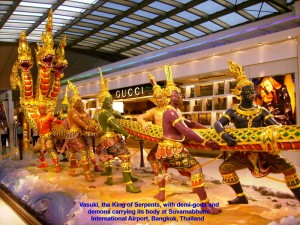
Sculpture of King of Serpents, demigods and demons at Suvarnabhumi International Airport, Bangkok, Thailand
Vishnu Kurmavatara
According to a legend about Vishnu Kurmavatara written on a board placed in front of the sculpture, I quote:
“This scene depicts Vishnu Kurmavatara and the churning of the Milk Ocean. The naga, Vasuki, (the King of Serpents) curled around the mountain, Mandara. Vishnu, incarnated in the form of a great turtle, supports the mountain on his back. Devas (demigods) and Asuras (demons) pull the naga’s body to churn the water of the ocean for thousands of years in order to produce the nectar of immortality, Amrita. From the churning, numerous opulent items are produced, including Dhanvantari carrying the pot of Amrita. In the end, the cooperation between Devas and Asuras is shattered. The Devas fulfill their plan of acquiring all Amrita and disperse the Asuras out of Heaven to the Underworld.”
Departure for Malaysia
Our air flight back to Malaysia was supposed to be at 6 p.m. but we departed Suvarnabhumi Airport at 7 p.m. On the way to Malaysia, my wife and I agreed that our three days’ stay in Bangkok was too short as we had missed many places of interest there. Anyway, we are now planning to visit another foreign place soon.
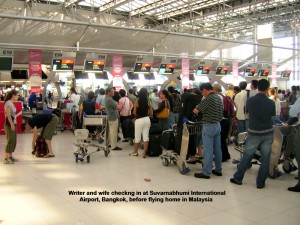
Writer and wife checking in at Suvarnabhumi International Airport before departure for home in Malaysia
Thank you for reading this travelogue and hope the information is useful to you.
Written by: Choo Chaw, Kluang, Johor, Malaysia
Shenzhen, Hezhou, Quilin, Zhaoqing Travel (Part I)
Shenzhen, Hezhou, Quilin, Zhaoqing Travel (Part I)
China is a large country with the world’s largest population of 1.4 billion. She is rich in history, arts, traditions and cultures of 5,000 years. Besides, China has unrivalled natural physical beauty.
Since China opened her door to foreign investors in 1980, it has transformed from a country of poverty to one of the world’s fastest growing economies.
Early year 2005, my wife and I decided to travel to China for the first time to learn about her people, culture and history. The first two main places we wanted to visit then were Shenzhen City and Quilin.
Below is the itinerary of our travel.
Day 1 Travel to Hong Kong Day 2 Shenzhen City Tour
Travel to Hezhou City I
Day 3 Gu Po Mountain Visit
Silver Cave (Lipu)
Day 4 Quilin City Tour
Day 5 Quilin City Tour (Last Day)
Li River Boat Cruise
West Street (Yangshuo)
Day 6 Travel to Zhaoqing City
Day 7 Zhaoqing City Tour
Back to Shenzhen City
Day 8 Travel Back to Malaysia
Day 1: Monday 30 May 2005 Travel to Hong Kong
Our Tour Group On 30 June 2005, my wife, son and I joined a group of 17 Malaysians for an exciting tour
of some cities in the two China provinces of Quangdong and Quangxi. As summer in Southern China is hot and wet, we decided to bring along light clothing and umbrellas for the trip.
At Changi International Airport in Singapore, we boarded a China plane (A737 300) and at about 5.30 p.m. the plane took off for Hong Kong. After a few minutes of flying, we felt slightly hot in the plane. I was wondering whether the air-con inside was under utilized. During the flight, the plane encountered a few moments of minor turbulence over South China Sea. Although we were asked to be seated and tied ourselves with safety-belts during the turbulence I was surprised to see the air-stewards and air-stewardesses continuously distributing food to the passengers.
Arrival at Hong Kong After 3 1/2 hours of trouble-free flight, the plane landed safely at Hong Kong
International Airport (Chek Lap Kok) on Lantau Island.
Then we passed through the Hong Kong immigration, custom and health checkpoints smoothly. After that we boarded a green coach and were on our way to mainland China.
Before entering mainland China, we had to go through another immigration checkpoint at the border, Shenzhen Checkpoint. We went through the checkpoint fast as there were not many people at the late evening (10 p.m.)
Day 1: Monday 30 May 2005 Arrival at Shenzhen City
After the Shenzhen checkpoint we boarded another coach and began our 7 day-tour in south-east China. At 11.00 p.m. we checked in at Sunon Hotel in a narrow street, Yongxin Street, in Shenzhen. After checking in and leaving our luggage in our room, my wife and I hurriedly went out shopping near the hotel. We were surprised that at such late hour, shops were still open and the brightly-lit streets were crowded with people. It looks as though Shenzhen is a city that never sleeps.
About Shenzhen Shenzhen is a fast growing metropolis with a population of 5 million. It is located in the southern coastal area of Guangdong Province and 35 km north of Hong Kong City. It faces
the South China Sea in the east and high mountains in the south-east and low ones in the north-east. It is commonly known as Hong Kong’s “backyard”.
In 1979, China, under the leadership of Deng Xiao Ping, opened its door to foreign investors. Since then she has transformed from a country of poverty into one of the world’s fastest growing countries. She produces goods ranging from apparel to vehicles. Her goods are sold everywhere in the world as they are produced cheaply by her hardworking people.
Economic Zones Shenzhen is divided into three parts: the Special Economic Zone (SEZ), Shenzhen City and Shenzhen County.
The SEZ attracts many foreign investors as China offers significant tax concessions during the early life of their projects. It now has many industries, including machinery, automobile assemblies, electrical goods, electronics, textiles and foodstuff.
The world demand for goods is so great that Shenzhen has built three harbours for a large number of container-ships which help to export its goods.
Day 2: Tuesday 31 May 2005 Shenzhen City Tour
After breakfast at the Sunon Hotel restaurant, we went on a sightseeing tour of Shenzhen City.
Old Shenzhen City First, we went to the old city. It was once a busy fishing village with a population of 30,000. The streets here are narrow, crowded and jammed with traffic. Quaint buildings are still standing there. It is a popular place among both locals and tourists as it offers myriads of merchandise ranging from apparel to the latest cell-phones as well as a variety of local cuisines.
New Shenzhen City When our coach brought us to the new city, we were amazed to see a complete change. The new city is planned and modern. Here the streets are wide and lined with trees. Multi-storey skyscrapers are mushrooming on both sides of the streets for commercial and financial purposes. The tallest is 356 metres high. They house offices, banks, shops, restaurants, hotels and many more. High-rise residential buildings can be seen in the outskirts of the city.
Cars of Popular Brands It is amazing to see many cars of popular brands on the roads. The people in the city must have benefited from the rapid economic growth in Shenzhen and become affluent. As China’s one-child policy has stopped many from having a second child, more people have much disposable income to buy a car.
Shenzhen City has no interesting historical and cultural sites, but it has some interesting attractions, like the theme and amusement parks, viz. “Splendid China Park”, “China Folk Culture Village” and “Window of the World”.
Lianhua Hill Park (Lotus Hill Park) After the city tour, we went to Lianhua Hill Park (Lotus Hill Park) which is about 2 km from the city. It is a clean, refreshing, open space with carpet grass. The park is on a gentle slope of Lianhua Hill (106 metres high). A small road leads to the top of the hill where a statue of Deng Xiao Ping is
located. Locals bring their families there for fun, relaxation, jogging, hill-climbing and kite-flying.
Xingyu Mineral Museum Then we went to Fu Tian District in Shenzhen to visit Xingyu Mineral Museum. Its exhibits include crystals in their natural shapes and forms, crystal balls of different colours, jade made into jewellery, miniature boats, fruits and animals and intricate embroidery works. Most of the exhibits in the museum are for sale.
‘Pixiu’ The only exhibit that attracted my attention was a figure of an unusual creature known
as Pixiu’ (dubbed as David’s Deer). It is a mythical animal with a dragon’s head, horse’s body, lion’s paws and kylin’s horns. The Chinese believe that if you have a ‘pixiu’, you will have a peaceful and healthy life, good luck, wealth and power.
Day 2 : Tuesday 31 May 2005 Travel to Hezhou City
At 11 a.m. we left Shenzhen City and headed west for a long journey to our next destination, Hezhou City in Quangxi Province.
Expressways Travelling west on the Guan Shen Expressway, we
noticed the scenery changed from urban to rural. The expressway cuts across the Pearl River Delta. The delta is one of China’s most densely cultivated areas as rivers, Xi Jiang, Pei Jiang, Tung Jiang and Pearl River, from all over the provinces flow through this fertile region to the South China Sea. In the countryside, villages of old buildings, fish-ponds, duck-ponds, paddy fields, vegetable farms and orchards are common sights.
The expressway passes by many towns. When the the traffic was approaching Quangzhou City, it started to crawl. Vehicles ranging from smoke-belching heavy ones to the latest model cars choked the expressway. Then our tour guide told us that we were not going to visit Quangzhou City as the traffic jam there would set us back two hours. So we bypassed the city
and travelled along a few more expressways, such as Hua Nan, Guangfo and Guan San. The motorists using these expressways have to pay toll charges which are high.
Lunch-Time At 1.30 p.m. we stopped at a restaurant, Nan Jiang Fishing Port, in the outskirt of Sihui City which is near Sansin City for lunch. The food served here was bland and salty. As we were hungry, we ate it without much complaint. Then we were on our way again to Hezhou City.
Bad Roads This time the journey was uncomfortable as the coach was travelling on narrow, old roads in Quangxi Province. It had to make a detour at places where roads were under repair. While
travelling in the mountainous areas, our coach-driver had to drive cautiously on the narrow, winding and steep roads. There are many heavy vehicles travelling on these roads. Each time a big vehicle passed by, it came too close to our coach making us worried.
Simple Washrooms At 3.30 p.m. our coach stopped at a petrol station, Fan Lin Petrol Station, for refilling. Some of us went to a washroom nearby. When I entered the washroom for gentlemen, I was surprised to see a row of small cubicles with low walls of 1 metre high and without doors.
Out of curiosity, I entered one of them. Then I figured out that if I wanted to do the big ‘business’ I would have to squat over a narrow deep drain which ran under all the cubicles. As there was no water in the cubicle, I would have to leave the
cubicle without flushing away my “deposit”. I was told that it would be flushed away at intervals together with the rest by a large among of water rushing down the drain and making all the ‘things’ disappear down somewhere. I was told by the ladies that their washroom had the same toilet facility as the gents’. Some of them who were shy used umbrellas to hide themselves for privacy!
Quangxi Province Soon we entered Quangxi Province from Quangdong Province. There is a blue arch over the road that marks the border btween the two provinces. Quangxi province is less developed than Quangdong Province. It is a common sight to see
farmlands of paddy, maize and vegetables, orchards of lychees, longans, plums and peaches, fish-ponds and duck-ponds in the rural areas. Along main roads, traditional industries such as stone-cutting, bamboo-collecting and brick-making can be seen.
Hezhou City After about 8 hours of travelling from Shenzhen City, we finally arrived at Hezhou City and checked in at a hotel known as “New Century Hotel” along Gu Po Hill Road.
Hezhou City is in the east of Guangxi Zhang Autonomous Region with a population of 900,000. It has a history of more than 2,000 years. Besides cultural relics and historical sites, it has beautiful landscapes of limestone hills and caves attracting many tourists from home and overseas.
Motorized Tricycles The roads in Hezhou City are wide. Most of the busy crossroads do not have traffic-lights. The most popular means of city transport here is motorized tricycles. On these vehicles, the drivers sit in front of their passengers. It is surprising to see many young women driving these vehicles for a living.
Day 3: Wednesday 1 June 2005 Gu Po Mountain Visit
An International Passport Incident After breakfast at the New Century Hotel restaurant, we were shocked when we learned that one of our tour members had lost his international passport. He was bombarded with a lot of questions about his lost passport. A thorough search in his hotel room paid off. It was found hidden under his comforter. He said he could not remember putting it there the previous night. Anyway, we heaved a sigh of relief when we were told that it was found.
After that incident our tour guide told us to hand over our passports to him every night and he would keep them in the hotel safe deposit box. He added that he would return them in the morning.
Gu Po Mountain At 8.30 a.m. we departed for Gu Po Mountain (Gu Po Shan). The road to the mountain is narrow and bumpy. When we arrived at the foot of the mountain, it was raining heavily. Crystal clear water could be seen rushing down a stream with rocks at its bottom. The place was lush green and scenic and the air there was clean and
refreshing.
Angel Waterfall To go to a beautiful waterfall called Angel Waterfall, we took a 9-seat vehicle. It took a few minutes to reach there. Standing in front of the waterfall we were awestricken by the spectacular sight of water continuously rushing down the steep 30-metre high waterfall.
Legend According to a legend, there was a long drought in the
farms near the mountain. One day, an old lady went to the mountain and spent many days praying to an angel for rain. Finally, the angel answered her prayer and the farmers were happy to see rain falling down for many days. That is how the mountain gets its name, i.e. Old Lady Mountain (Gu Po Shan) and the waterfall, Angel Waterfall.
When we came down the steep mountain, we stopped at a winery where gluttonous rice is made into rice wine. We tasted a few types of wine, each containing different amount of alcohol. A few of us bought it. Then we went to a small tea farm to learn about tea-making. Later we went back to the foot
of the mountain where our coach was waiting to take us to one of the most spectacular karst landforms in the world in Lipu. It is known as Silver Cave.
Day 3: Wednesday 1 June 2005 Silver Cave (Lipu)
On the way to Lipu, we passed through a few towns and villages. We also crossed a long bridge which is over Xijiang river (China’s third longest river) in the mountainous region.
Silver Cave Silver Cave is in Maling Town of Lipu County. It has been opened to tourists since 1999. It is about 2 km long: passing through twelve limestone-hills. It consists of three parts: Lower Part, Grand Hall and Upper Part. It is like a fairyland inside the caves as one can see stunning stalactites and stalagmites of different shapes and sizes resembling “musical curtain”, “preaching Buddha”, “waterfall on snowhill”, “pearl-decorated umbrella”, “twin towels”, “sea corals” and many more. It took us more than an hour to walk from one end of the cave to the other. The beauty of the structures is enhanced by colourful lighting.
Dinner: After the awesome experience in Silver Cave, we had an early dinner at Silver Cave Restaurant nearby. At 6.20 p.m. we left for Quilin which is 85 km north of Silver Cave.
On arrival at Quilin at 8 p.m. we checked in at a three-star hotel, City Garden Hotel, along Zhongshan South Road. Later, all of us went for a foot massage. After that painful and ticklish treatment, we felt fresh and rejuvenated. Then we went shopping in a few streets which were brightly-lit.
Written by: Choo Chaw, Kluang, Johor, Malaysia
Hong Kong Travel (Part II)
{Continued from Hong Kong (Part I)}
Hong Kong Travel (Part II)
Day 2: 1 May 2007
Ocean Park
It is a large theme park covering an area of 87 hectares. It consists of two parts: the Headland on the higher ground and the Lowland on the lower ground. To enter the theme park, visitors can use either the Main Entrance at the Lowland or Tai Shue Wan Entrance at the foot of the Headland. There are covered elevators or cable car to go up to the Headland.
The Park has been in operation for 30 years. It is a place where people, young or old, like to have fun, entertainment and excitement.
With over 40 attractions and rides, the Ocean Park keeps attracting millions of tourists, annually.
At the Ocean Park, thrill-seekers can ride a roller-coaster of The Dragon and Mine Train, drop 60 metres to the ground suddenly made possible by The Abyss, get wet while riding a boat in The Raging River, drive go-karts in Grand Prix, spin in Space Wheel and swing in Flying Swing.
For animal lovers, they can join Animal Close Encounters programs to see animals like foxes, wolves, bull frogs, rabbits, dogs, jelly fish, sea lions, dolphins, fish, pandas, sharks and birds.
Those who enjoy relaxing rides can go for a cable-car ride, Ferris Wheel, Ocean Park Tower and SkyFair Balloon ride.
For show-lovers, they can watch shows performed by dolphins and sea lions at Ocean Theatre, world class ice-skaters at Tai Shue Wan Theatre and birds at Amazing Birds Theatre.
Ocean Park Tower When my wife and I were at Ocean Park, we went for the Ocean Park Tower ride. It rotated as it moved slowly up to a height of 200 metres above sea-level providing a 360 degree aerial view of the South China Sea, Aberdeen and small islands as well as the Headland theme park below. We went up twice as we loved to see the stunning scenery.
Ocean Theatre: A Dolphin and Sea Lion Show
After the enjoyable Ocean Park Tower ride, we went to watch the dolphin and sea lion show at Ocean Theatre which is a stone throw from Ocean Park Tower. Before the show started we were entertained by a group of musicians for half an hour. It was fun to sing along with them.
In the show, three dolphins showed off some stunts, like jumping out of the water to do the twist and turn, and touch a ball high
above the water, giving a trainer a piggy back ride and dancing in the water, while three sea lions made us laughed as they kept teasing their master.
Ocean Park: Lowland After the dolphin and sea lion show, we went to queue outside the cable-car station. It did not take us long to wait for our turn. Sitting in a cable-car and moving down to Lowland, we enjoyed the spectacular, scenic views of Repulse Bay,
the coastline, the lush green terrains, islands and blue South China Sea.
SkyFair Ride On arrival at Lowland, we headed straight for the SkyFair balloon ride. The helium filled balloon took us to a height of 120 metres for bird-eye views of the coastline and South China Sea as well as Lowland below.
The balloon has a diameter of 22 metres, contains 6,000 cubic metres of helium gas and can take 30 passengers in its gondola at a time on a fine day.
After the enjoyable balloon ride, we went to watch an acrobatic show staged by a team of daring young men.
Giant Pandas There are two famous giant pandas, An An and Jia Jia, in their HK$80 million habitat on a higher ground in Lowland. When we were there it was closed to visitors. We were told that it was under renovation.
Later, we went back to Headland by cable-car again to have a last look at the breathtaking scenery. In the evening, we left Ocean Park through Tai Shue Wan Entrance and took a bus, No. 629, to
Central. Arriving at Central, we took another bus, No. 15, to go up the famous Hong Kong peak, Victoria Peak or, simply, The Peak.
The Peak or Victoria Peak The Peak or Victoria Peak is in the south-western part of Hong Kong Island with a height of 552 metres. It is the highest mountain on the island and forms a backdrop of the island city.
The road to the top is narrow, steep and winding. The side of certain parts of the road is almost over the steep slope of the
mountain. While ascending the Peak, our experienced bus-driver, skillfully, negotiated some difficult bends. He, finally, brought us to the top safely in 40 minutes.
The Peak Tower When we reached the height of 395 metres above sea-level on The Peak mountain, we were amazed to see the latest landmark of the island, The Peak Tower, with a height of 33 metres. It is built in a unique modern structure that looks like a large rice-bowl or wok.
The seven floor tower houses restaurants, shops and entertainment areas. It provides a rooftop platform for viewing the breathtaking scenery of the cities on both sides of Victoria Harbour: Hong Kong and Tsim Sha Tsui. The rooftop platform is 428 metres above sea-level.
Peak Galleria Opposite The Peak Tower is a large shopping complex, Peak Galleria. It has lots of shops selling a wide range of goods and restaurants.
The Peak Tower Rooftop In the evening, we went up to the rooftop of The Peak Tower by elevators. When we reached there we
were surprised to see a lot of people there. As it was so crowded we could not get to the edge of the rooftop to have a good view of the skyscrapers of the city below. After waiting, patiently, for a few minutes, we got a good spot. Standing there, we were mesmerized by the awesome panoramic view of the colourfully-lit Hong Kong City below and part of Tsim Sha Tsui City in the distance. It is like a fairyland with a sea of colourful lights.
Fireworks on Labour Day After 8 p.m., fireworks were, suddenly, shot into the air from the city-skyscrapers lighting up the sky, brightly. They were set off, intermittently, to celebrate Labour Day (1 May 2007). The extravaganza lasted for several minutes mesmerizing all of us on The Peak Tower’s observation deck.
Madame Tussauds Hong Kong The Peak Tower has a wax museum known as Madame Tussauds Hong Kong. It houses over 100 stunning life-like wax figures of entertainment, fashion, TV and film celebrities,
historical and national heroes, sports heroes and music icons, like Jackie Chan, Bruce Lee, Leslie Cheung, Andy Lau, Maggie Cheung, Anita Mu, Bae Yong Jun, David Beckham and President Hu Jintao. We did not enter the wax museum as we have visited one in London.
The Peak Tram Visitors can go up or down The Peak by The Peak Tram. It is the world’s steepest funicular railway that brings 120 passengers up the Peak in about 8 minutes each time. It is pulled up along a 1.4 km track by a thick haulage rope. The gradient of the track is between 4 and 27 degrees. When the tram is moving along a steep track, the passengers will think that the nearby buildings are tilting.
The Peak Tram is similar to the one on Penang Hill in my country, Malaysia. It has been in operation since 1888. While riding on the tram, passengers will have panoramic views of the cities on both sides of Victoria Harbour and the harbour itself. (Ticket: HKD30 one way)
The Peak Descend At 8.40 p.m. we came out of The Peak Tower and decided to descend the mountain by The Peak Tram. But we were shocked to see a very long queue outside The Peak Tram terminal. As we were not sure how long we had to wait for the tram, we decided to go down The Peak by bus No. 15 again.
While descending The Peak, we felt the bus jolted a few times along the long, narrow and winding mountain road. But the skilful driver brought us safely to the foot of The Peak in 25 minutes, 15 minutes faster than the ascend!
Day 3: 2 May 2007
A Visit to Lantau Island On the third and last day of our stay in Hong Kong, we decided to go to Ngong Ping Village on Lantau Island to see a giant Buddha statue, known as Tian Tan Buddha. It would be a welcome change for us to visit a countryside.
Lantau Island After breakfast at Mongkok we took an MTR train
to Tung Chung, a small town on Lantau Island. Lantau Island with a small population of 45,000 people is the largest island of Hong Kong. The views of Its pristine terrains of lush green valleys and mountains are spectacular. The island’s highest mountain, Lantau Peak, has a height of 934 metres. Half of the island is now protected for its natural beauty and charm.
Skyrail On arrival at the Tung Chung MTR station, we proceeded to the Skyrail terminus nearby to buy tickets for the cable car ride
to Ngong Ping. Although there was a long queue to the ticketing counters, it was moving fast.
A “Special Day” After 20 minutes of lining up, I finally came to a ticketing counter. I was shocked when the ticket seller told me that I had to pay HKD10 more for a ticket as that day was a “special day”. But I told him that the price of a ticket should be reduced as it was a “special day”. He then explained that “special day” means ” holiday” when there were many visitors and so the
price of a ticket was increased. Having understood what he meant, I paid for the tickets for the Skyrail ride for my wife and myself .
Skyrail was opened on 18 September 2006. It is a 20-25 minute cable-car ride from Tung Chung to Ngong Ping Village as the distance is 5.7 km.
A Scenic Journey to Ngong Ping Village While we were in a Skyrail cable-car moving over Tung Chung Bay towards Hong Kong International Airport, we saw airplanes taking off from the airport one at a time. Then our cable-car turned at an angle at Airport Angle Station and moved away from the airport and over the bay again towards Lantau Island.
As it was gliding high above the island, we had breathtaking views of lush green mountains and valleys of North Lantau Country Park and the South China Sea. Occasionally, we saw nature walking tracks in the protected park.
Soon we saw Ngong Ping Village and a figure, Giant Buddha or Tian Tan Buddha, sitting serenely on top of a hill in the distance. Finally, we arrived at Ngong Ping Village.
Ngong Ping Village The village looks new and has been
designed and landscaped to reflect the Chinese ancient culture and spirituality. The houses look like those we saw in Beijing Hutong.
An Amazing Act Entering the village we were attracted by a small crowd watching a show performed by some Chinese men dressed in red Kung-fu uniforms. They were demonstrating their acrobatic, fighting and other skills on a small stage. One of their acts amazed me. In the act, a man in red stood barefooted on sharp knives without getting hurt in the soles of his bare feet.
“Walking With Buddha” and “Monkey’s Tale” As we strolled through the crowded small village, we passed shops selling food and drinks, souvenirs, antiques, apparels, etc. There is a Chinese traditional building with red walls and yellow roof featuring a multimedia show, “Walking With Buddha”, that traces the Buddha’s path to enlightenment. Another building nearby shows an animation presentation about a monkey learning the importance of humility and kindness. It is called “Monkey’s Tale”. Having seen the village, we entered a large garden known as Tian Tan Garden.
Tian Tan Garden (‘tian tan’ in Chinese means ‘heaven’) We left the Ngong Ping Village and entered a
garden adjacent to it. The garden is known as Tian Tan Buddha Garden which was opened on 10 September 1996. In the middle of the garden stands a large bronze Chinese traditional urn with three large colourful joss-sticks planted in the middle. Near the urn is a circular mound altar which is smaller than the one in front of the Temple of Heaven in Beijing. There is a row of stalls further down selling postcards, hats, fruits, ice-cream, drinks, snacks, etc.
Giant Buddha or Tian Tan Buddha Standing in the middle of the garden, we looked up and saw a huge bronze Buddha statue sitting on a lotus throne atop a hill. Many tourists were walking up the 268 steps to the statue. The statue is known as Giant
Buddha or Tian Tan Buddha which is 34 metres tall. It is the tallest seated outdoor bronze Buddha statue in the world. Completed in 1993, it took the engineers 10 years to construct the large figure. It is an engineering feat.
On the way up the steps, we saw a few large bronze sculptures, like an ancient Chinese urn and lamp, in the middle of them. The climb to the top was slightly difficult, as it was long and steep (about 268 steps). But when we reached the top we totally forgot about our tired legs. It was because we were overwhelmed by the hugeness of the statue. Besides, the panoramic views of the Ngong Ping terrains and the bird’s eye view of Tian Tan Garden and a Buddhist monastery, Po Lin Buddhist Monastery, near the garden, were spectacular. Kneeling down at the base of the Giant Buddha
statue are six bronze statues of beautiful ladies each making an offering to Him.
Po Lin Buddhist Monastery and Wisdom Path Po Lin Buddhist Monastery was built in 1917. (“Po Lin” in Chinese means “Precious Lotus”). Not far from the monastery is a place where tall wooden pillars carrying sacred texts are planted in a figure of the infinity symbol, symbolizing the immeasurable splendour and infinity. This place is known as “Wisdom Path”.
Return to Tung Chung After an enlightened tour of Ngong Ping Village and Tian Tan Buddha Garden, we walked to the Ngong Ping station and boarded a Skyrail cable-car. Then we were on our way back to Tung Chung.
As we were travelling to Tung Chung by Skyrail, we saw an unusual thing on a high hill. It was a lonely white Chinese graveyard. I wonder whose graveyard that is and why it is high up there.
Before reaching Tung Chung, we saw some fishermen in the waist-deep water of the Bay of Tung Chung searching for shellfish.
Tsing Ma Bridge On arrival at Tung Chung, we took a bus to Admiralty. On the way, we crossed a long suspension bridge known as Tsing Ma Bridge. It has two decks carrying road and rail traffic and is part of the Lantau Link which links Lantau Island as well as Hong Kong International Airport to the urban areas in Hong Kong. Opened in 1997, Tsing Ma Bridge is the world’s longest road-and-rail suspension bridge (1.4 km long) but the 6th. longest suspension bridge (2.1 km long).
On arrival at Admiralty, we decided to go to Hong Kong Convention and Exhibition Centre in Wan Chai.
Hong Kong Convention and Exhibition Centre At Hong Kong Convention and Exhibiton Centre, we were surprised to see a multitude of tourists there. The Centre is a large building with the world’s tallest glass wall and a roof that resembles a seagull’s wings in flight. Opened in 1988 and expanded in 1997, the integrated complex houses exhibition halls, theatres, hotels and restaurants.
Golden Bauhinia Square Located in front of Convention and Exhibition Centre is Golden Bauhinia Square. It was at that square that the historic ceremony at which Britain handed over Hong Kong’s sovereignty to China at midnight on 1 June 1997 was held. Erected in the square is a beautiful gold-coloured monument of a flower known as “Forever Blooming Bauhinia” to commemorate the handover in 1997.
Bauhinia trees are common in Hong Kong and produce large beautiful flowers that have become the emblem of the Hong Kong flag.
Star Ferry Having visited Hong Kong Convention and Exhibition Centre,
we went to the Wan Chai ferry pier to board a green-and-white ferry, Star Ferry, to Tsim Sha Tsui in Kowloon. (Fare : HK$2.20).
The ferry began its operation in 1898. As it was crossing Victoria Harbour, we saw spectacular sceneries of the cities on both sides of Victoria Harbour and a large cruise ship known as Star Cruise Pisces berthed at a terminal. This ship reminds me of her sister
ship in Singapore known as Star Cruise Virgo which brought my wife and I on an enjoyable cruise in the Straits of Malacca on 11 September 2001 (American date).
Clock Tower When we arrived at Star Ferry Terminal in Tsim Sha Tsui, we went outside the terminal and saw a tall structure in an open space. It was Clock Tower which was erected in 1915 as part of the former Kowloon-Canton Railway Terminus. When the terminus was demolished in 1978 Clock Tower was left untouched . This 44-metre tall tower, built of red bricks, was declared a historical monument in 1990.
As we were strolling along the Tsim Sha Tsui promenade, we came across a few prominent buildings. Among them were the following:
Hong Kong Cultural Centre
It is a venue for classic performing arts, Western and Asian.
Hong Kong Museum of Arts It features Chinese antiquities, paintings and calligraphy, arts works from around the world and many more.
Hong Kong Space Museum Opened in 1980, it features astronomy exhibits. Besides, its egg-shaped roof houses Stanely Ho Space Theatre where Omnimax and Sky shows are presented. When I was there the museum was advertising three shows, viz. “Small Solar System Bodies”, “Jan Goodall’s Wild Chimpanzees” and “Mystic India”.
In the evening, we left Tsim Sha Tsui for our hostel, Dragon Hostel, in Argyle Road in Mongkok. At the hostel, Stanley, the kind, helpful and friendly hostel owner, allowed us to use his Internet service for free. We took that opportunity to send e-mails to our loved ones in Malaysia and Singapore.
Day 4: 3 may 2007
Departure for Macau In the following morning, we left Hong Kong with fond memories. We travelled by ferry to Macau to have a day tour there before going back to Malaysia.
I hope you have enjoyed reading this travelogue.
Written by Choo Chaw, Kluang, Johor, Malaysia
Hong Kong Travel (Part I)
Hong Kong is a well-known territory in the world. Located in the south-eastern part of China, it consists of Kowloon, the New Territories, Hong Kong Island, Lantau Island and over 260 small islands in the South China Sea. It has a total area of 1,104 sq. km. and a population of about 7 millions: 90 % of them is Chinese. Most of them are live in Kowloon and the northern part of Hong Kong Island. Hong Kong Island is considered as the most densely-populated island in the world. “Hong Kong” in Chinese means “Fragrant Harbour” as it was once a busy port where fragrant wood products and incense were actively traded. It is separated by a narrow stretch of water known as Victoria Harbour from Kowloon, but it is now connected by three underwater tunnels, viz. Cross-Harbour Crossing, Eastern Harbour Crossing and Western Harbour Crossing.
Historical Facts on Hong Kong: In 1841, Great Britain seized Hong Kong Island from China. A year
later, China ceded Hong Kong Island to Great Britain under the Treaty of Nanking. In 1860 China ceded Kowloon and Stonecutter to the latter again. In 1898, China granted 99-year lease on New Territories, Lantau Island and other islands to Great Britain.
In 1997, Great Britain returned Hong Kong to China, after ruling it for over 150 years. Since 1997, Hong Kong has become a China’s Special Administrative Region (SAR), operating under the “one country, two systems” principle. It means that it enjoys a high degree of autonomy in all affairs except foreign and defence for at least 50 years.
A Vibrant City Hong Kong is a vibrant city and a well-known financial and banking centre in the world. Besides, it is a famous tourists’ destination which offers lots of attractions ranging from historical colonial buildings, places of worship and lush green scenery to restaurants serving delicious and diverse local and
international cuisine, shopping malls, unique modern architectural sky-scrapers and theme parks. For these reasons, my wife and I decided to visit the city in 2007 for three days (from April 30 to May 2, 2007).
Air Asia (Malaysia) often offers cheap airfares to many destinations in Asia. As Hong Kong was not in its list of destinations, we booked the return ticket for a flight from Kuala Lumpur to Macau. Hong Kong is 60 km north-east of Macau.
Hong Kong Itinerary Below is the itinerary of our memorable three-day tour in Hong Kong.
1. Travel to Hong Kong / Tsim Sha Tsui / Kowloon Park
2. Urban Areas of Kowloon / Nathan Road
3. Avenue of Stars / A Symphony of Lights
4. Joy Guest House / Dragon Hostel / Victoria Harbour Tunnels
5. Central / Chater Garden / Legislative Council Building
6. Legislative Council Building / Sir Thomas Statue / A Street Tram
7. Ocean Park / Ocean Park Tower / Ocean Theatre
8. SkyFair at Ocean Park
9. Victoria Peak / Peak Tower / Wax Museum / Peak Tram
10. Skyrail / Lantau Island / Ngong Ping Village
11. Tian Tan Garden / Giant Buddha
12. Po Lin Buddhist Monastery / Wisdom Path / Tsing Ma Bridge
13. Convention and Exhibition Centre / Golden Bauhinia Square
14. Star Ferry / Clock Tower / Museums
Day 1: 30 April 2007
Travel To Hong Kong On the first day of our journey to Hong Kong, we left our homeland, Malaysia, by an Air Asia plane for Macau. On arrival at Macau, we took a ferry to Hong Kong which is 60 km. away. The
70-minute ferry journey was smooth except for a few minutes of rough ride on the choppy sea near our destination. {We took the budget Air Asia plane to Macau because Hong Kong was not in its list of destinations then.}
Tsim Sha Tsui At 1.10 p.m., we reached China Ferry Terminal at Tsim Sha Tsui, Kowloon. From the terminal, we walked through Harbour City (a megamall of four levels of shops, services and restaurants, and a departmental store), crossed a pedestrian bridge over Canton Road, walked through Kowloon Park and finally to Tsim Sha Shui MTR Station.
Mass Transit Railway (MTR) Mass Transit Railway (MTR) is an underground system that is quite extensive in Hong Kong. It is a fast, cheap and convenient way to move around in Hong Kong.
On the way to the MTR station, we stopped for a few minutes in a garden on the rooftop of Harbour City to admire the beautiful dolphin sculptures. These animals were named the official mascot of Hong Kong’s 1997 handover from Great Britain to China. There are big trees in the garden and we wonder how they are able to survive on the roof-top.
Kowloon Park We also stopped in the shady and beautiful Kowloon Park to watch some waterfowls in a pond, like swans, ducks and flamingos. Then we sat in a shady area to rest our tired legs.
Octopus Card On arrival at Tsim Sha Tsui MTR Station, we bought an
electronic fare card known as Octopus Card. We bought it as it was convenient to pay for public transport as well as bills at restaurants and stores.
Joy Guest House in Sham Shui Po Then we left Tsim Sha Tsui MTR station by train for Sham Shui Po where we checked in at a small hostel known as Joy Guest House in a high-rise building in Yee Kuk Street. It is run by a young enterprising couple, Buno and Pansy. After resting for an hour, we left the hostel and started our tour in some urban areas in Kowloon.
Urban Areas of Kowloon: In Kowloon we visited three urban areas,
viz. Sham Shui Po, Mongkok and Tsim Sha Tsui. After visiting them we found out that they have many things in common. They have, among them, a predominantly Cantonese-speaking population, many old multi-storey residential blocks, street-markets, crowded streets, large signboards with colourful neon lights hanging over the main streets, an MTR station, air-conditioned noodle and chicken rice shops, restaurants, shops and roadside stalls selling the same kinds of products at bargain or wholesale prices, some shopping complexes selling branded goods and heavy traffic in the main streets. These places have frequent influxes of bargain-hunters and food lovers from neighbouring areas and Hong Kong Island.
Among all the urban areas in Kowloon, Tsim Sha Tsui has the most number of attractions. It has historic buildings, skyscrapers, a variety of museums, a cultural centre, a beautiful garden, large shopping and
entertainment centres, a scenic promenade where tourists will be mesmerized by the spectacular views of the city on Hong Kong Island and Victoria Harbour.
Nathan Road There is one important road, Nathan Road, which runs directly from Tsim Sha Tsui in the south to Sham Shui Po in the north. It was originally known as Robinson Road, named after the 5th. Governor of Hong Kong, Sir Hercules Robinson. But in 1909, it was changed to Nathan Road, named after the 13th. Governor, Sir Mathew Nathan, as there was a road on Hong Kong
Island having the same name. Along this long busy road are tall buildings that house shops selling branded goods, restaurants, banks, hotels, etc.
Avenue of Stars In the evening we went to the Tsim Sha Tsui promenade where there is a well-known
place which pays tribute to famous film stars and the people involved in Hong Kong film-making. It is known as “Avenue of Stars” that is similar to the Hollywood’s “Walk of Fame”. It was opened in 2004 and features sculptures, plaques with famous film stars’ names (some with the stars’ handprints) and movie history milestone. At the entrance of the place stands a large bronze sculpture of a Hong Kong Film Award.
At this place, there are some kiosks selling film-related items, taking photos of tourists, selling snacks and drinks, making hand models from wax, etc. and are patronized by many tourists.
A Spectacular Display of Lights: “A Symphony of Lights” Extravaganza
Avenue of Stars is the best spot for looking at the stunning skyline of the Hong Kong City on the other side of Victoria Harbour during the day and night. It is also the best place for watching the city’s “A Symphony of Lights” extravaganza at 8 pm, nightly. This dazzling light and sound presentation of neon lights, laser lights and searchlights on more than 30 skyscrapers on both sides of the Victoria Harbour choreographed to some lively musics mesmerizes the tourists. It is supposed to showcase the vibrancy and charm of Hong Kong as a metropolitan city.
“A Symphony of Lights” earns Hong Kong the Guinness Book of World Records as the “World’s Largest Permanent Light and Sound Show”.
Tourist Cruise Boats While we were at Avenue of Stars watching the “A Symphony of Lights”, we saw some
boats chugging along the Victoria Harbour. They were carrying tourists to watch the spectacular show and see the stunning sight of the brightly-lit skyscrapers. After the 20 minute light show we went back to our hostel in Sham Shui Po.
Day 2: Tuesday 1 May
In the morning of the second day, we checked out from the hostel, Joy Guest House, and walked to a coffee-shop to have our last breakfast in Sham Shui Po. (Most of the food and beverage shops in Hong Kong are air-conditioned.)
Secondhand Goods As we were walking along Yee Kuk Road, we saw some workers busy loading
secondhand electrical goods, such as refrigerators, TV’s, VCD/DVD players, radios, etc., into a blue container. Out of curiosity, I asked a local man about the activity and he told me that those things were meant for export to third world countries. After a hearty breakfast at a coffee-shop in Sham Sui Po, we left for Mongkok.
Dragon Hostel in Mongkok On arrival at Mongkok, we entered another budget hostel, Dragon Hostel, in Argyle Street. As we were too early to check in, we left our luggage with Stanley, the hostel owner, and decided to visit Central on the Hong Kong Island.
Instead of taking a ferry from Kowloon to the island, we took an MTR train from Mongkok to Central. This rail transport is faster as the train goes through a tunnel under the Victoria Harbour water.
Victoria Harbour Tunnels Hong Kong Island is now linked to Kowloon by three tunnels built under the Victoria Harbour water, viz. Cross-Harbour Tunnel (opened in 1972), Eastern Harbour Crossing and Western Harbour Crossing. These tunnels help to reduce travelling time between the financial and commercial cities on both sides of Victoria Harbour.
Central Central, Admiralty and part of Sheung Wan on Hong Kong Island were the early British settlements
when Hong Kong became a British colony in 1842. They were, originally, known as Queenstown but later Victoria City. Nowadays, the name “Victoria” refers to Victoria Harbour and Victoria Peak in Hong Kong. Central has been Hong Kong’s hub of commercial, financial and banking activities since the arrival of the British in 1841.
Central Business District Located in this central business district (CBD) are many multi-national commercial, financial and banking headquarters, five-star hotels, large shopping complexes and shops
selling branded goods. Besides, it has some historical buildings built in the British colonial era, such as Western Market, Government House, Legislative Council Building, Court of Final Appeal, Flagstaff House Museum of Tea Ware, Foreign Correspondents’ Club, Star Ferry Terminal and St. John’s Cathedral.
Skyscrapers Standing in Central, we felt so small in size as we were surrounded by skyscrapers, like
Cheung Kong Center(62 floors), Island Shangrila(57 floors), Bank of China
Tower(70 floors), Standard Chartered Bank Building(45 floors), HSBC Main Building(52 floors), AIG Tower(40 floors), Jardine House(52 floors), Exchange Square(52 floors), Two IFC(88 floors, the tallest building in Central), and many more.
Bank of China Tower Among the skyscrapers in Hong Kong, I find Bank of China Tower the most unusual one. This unique building is easily recognizable in the distance. Built in 1990, it has geometrical lines which are supposed to resemble a bamboo plant symbolizing revitalization and hope. It was designed by a well-known Chinese American architect, Ieoh Ming Pei, who is an MIT and Harvard graduate in architecture. He was born in Canton,
China in 1917. Louvre Pyramid in Paris (1989), Raffles City in Singapore (1985), Rock and Roll Hall of Fame in Cleveland, Ohio and Museum of Islamic Arts in Doha, Qatar are some of his designs.
Chater Garden While walking to a public garden, Chater Garden, we heard a lot of noise. At first, we thought birds were making the noise there. But when we reached the place we were surprised to see many groups of foreign maids having picnic and chattering away. Then I jokingly told my wife that the name of the garden should be changed to “Chatter Garden”.
Foreign Maids in Chater Garden A lot of foreign maids were at the garden because it was a public holiday, Labour Day (1 May 2007). I guess they meet each other on weekends too and Chater Garden is one of their favourite rendezvous. At present there are about 250,000 foreign maids in Hong Kong and most of them are from poor countries, like the Philippines and Indonesia.
Chater Garden is named after an influential Hong Kong businessman, Sir Catchick Paul Chater (1846-1926). It is a medium-sized garden with many shady trees and a pool of water located right in front of Legislative Council Building.
Legislative Council Building Standing in Chater Garden, I saw a majestic, quaint building. It was built in 1912 in neo-classical style with columns and arches along Jackson Road. Originally, it housed the Supreme Court. But in 1985, it was taken over by the Legislative Council which still occupies the building.
On top of the front roof of the building is the Statue of Justice, a
blind-folded lady, Themis, (the Greek Goddess), carrying a sword in one hand and scales in the other. Strangely, this statue has one thing that is different from the Statue of Justice on top of the Old Bailey in London. The latter is not blind-folded.
Statue of Sir Thomas Jackson (1841-1915) It is not easy to find a bronze statue of an important person in Hong Kong. But in Chater Garden, I found one. It was the statue of Sir Thomas Jackson (1841-1915) in front of HSBC Building. HSBC erected it there in honour of his excellent service when he was its Chief Manager from 1870 to 1902.
Court of Final Appeal Building Not far from the Chater Garden is the Court of Final Appeal Building. It was built in neo-classical style in 1917 by the
French Mission. In 1953 it was sold to the Government which successively used it as the Education Department, the Victoria District Court, the Supreme Court and the Information Centre. Now it houses the Court of Final Appeal.
A Street Tram In the afternoon, we left Central and walked to a bus station near Lippo Tower in Admiralty. We intended to visit Ocean Park in the southern part of Hong Kong Island.
On the way to the bus station, we saw an unusual double-decker vehicle moving noisily but slowly on a railway with a cable attached
to its top. It is a street tram that runs along a 13 km railway line on North Hong Kong Island. Since 1904, this classic icon of Hong Kong has been providing an old fashion-style travel experience in the hustling and bustling city. For a ride on a tram, you need to pay a small sum, HKD2.
At the Admiralty bus station, we boarded Citybus no. 629 and soon we were on our way to Ocean Park in the southern part of Hong Kong Island
{To continue reading this travelogue, please go to Hong Kong Travel (Part II)}

